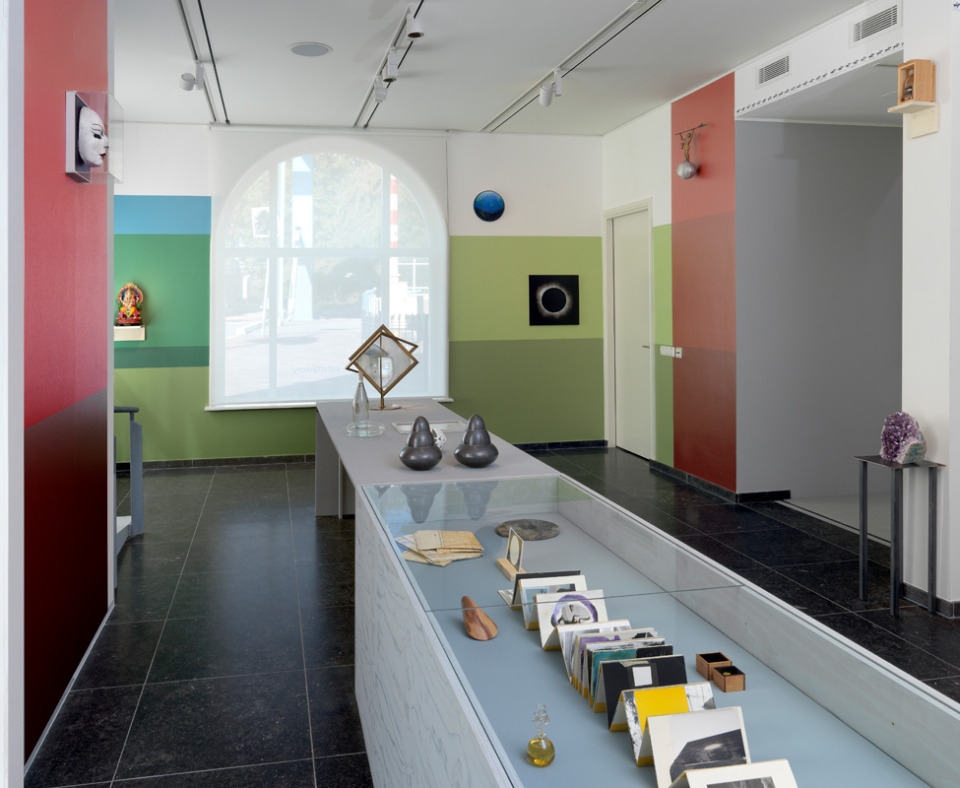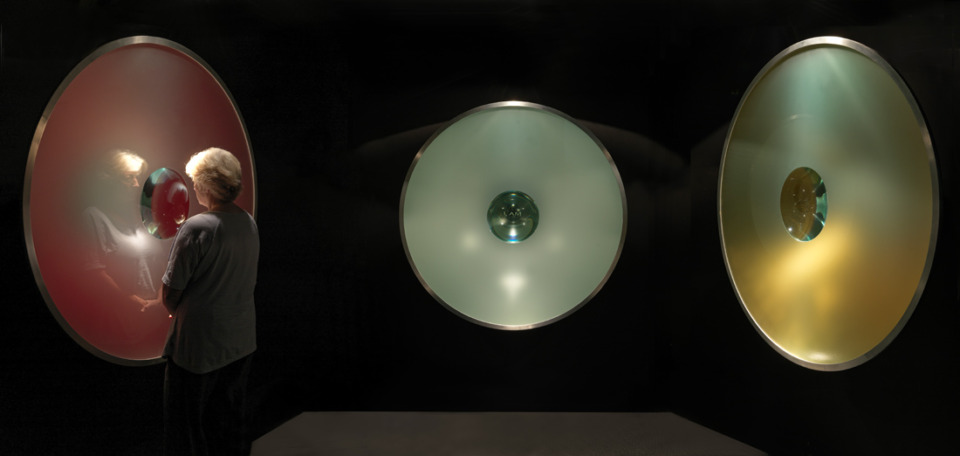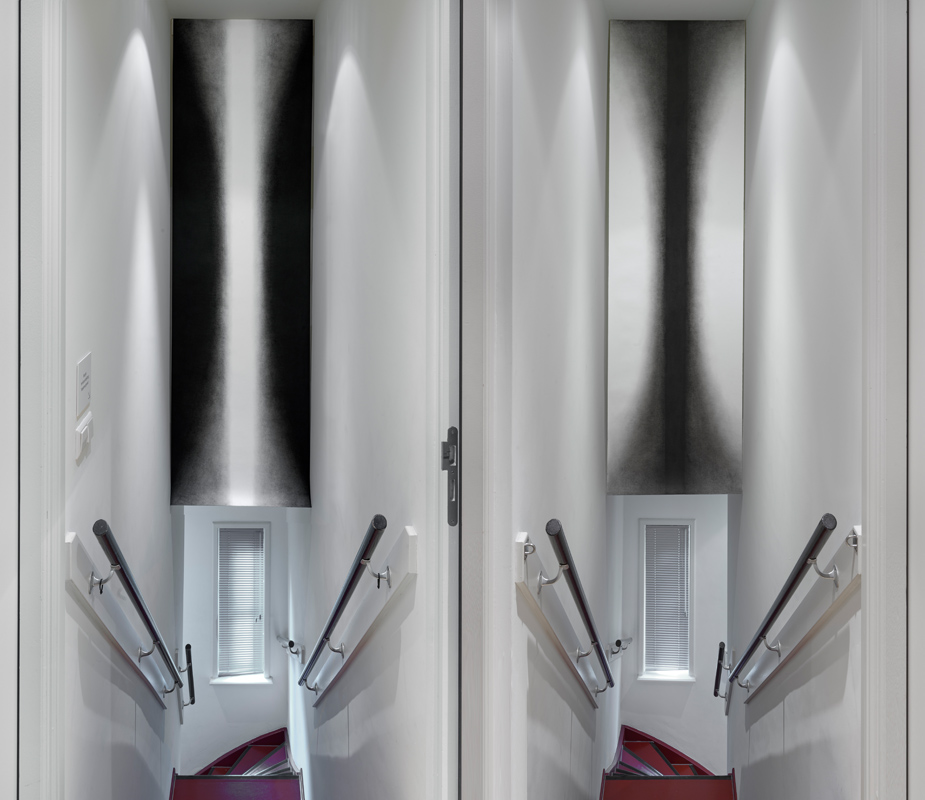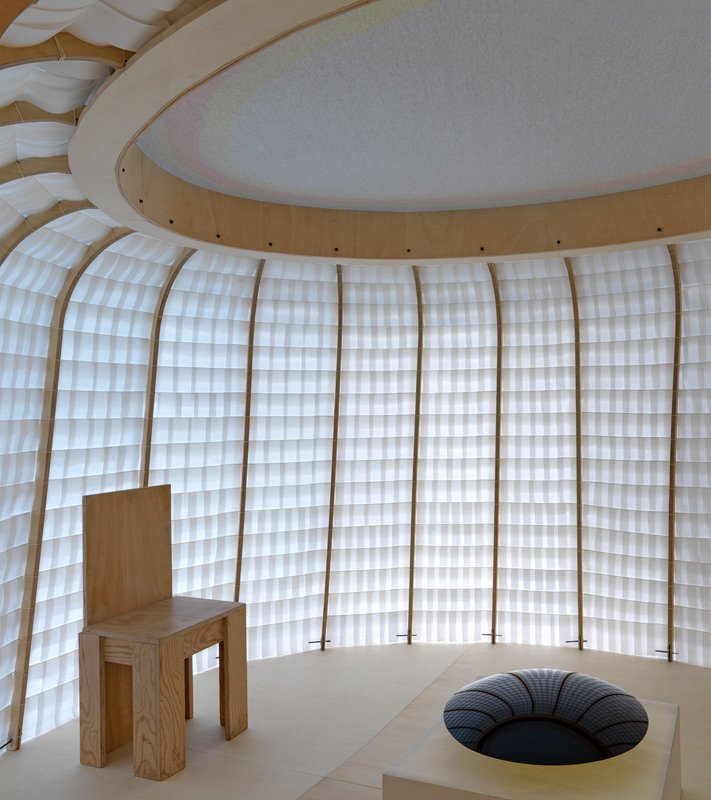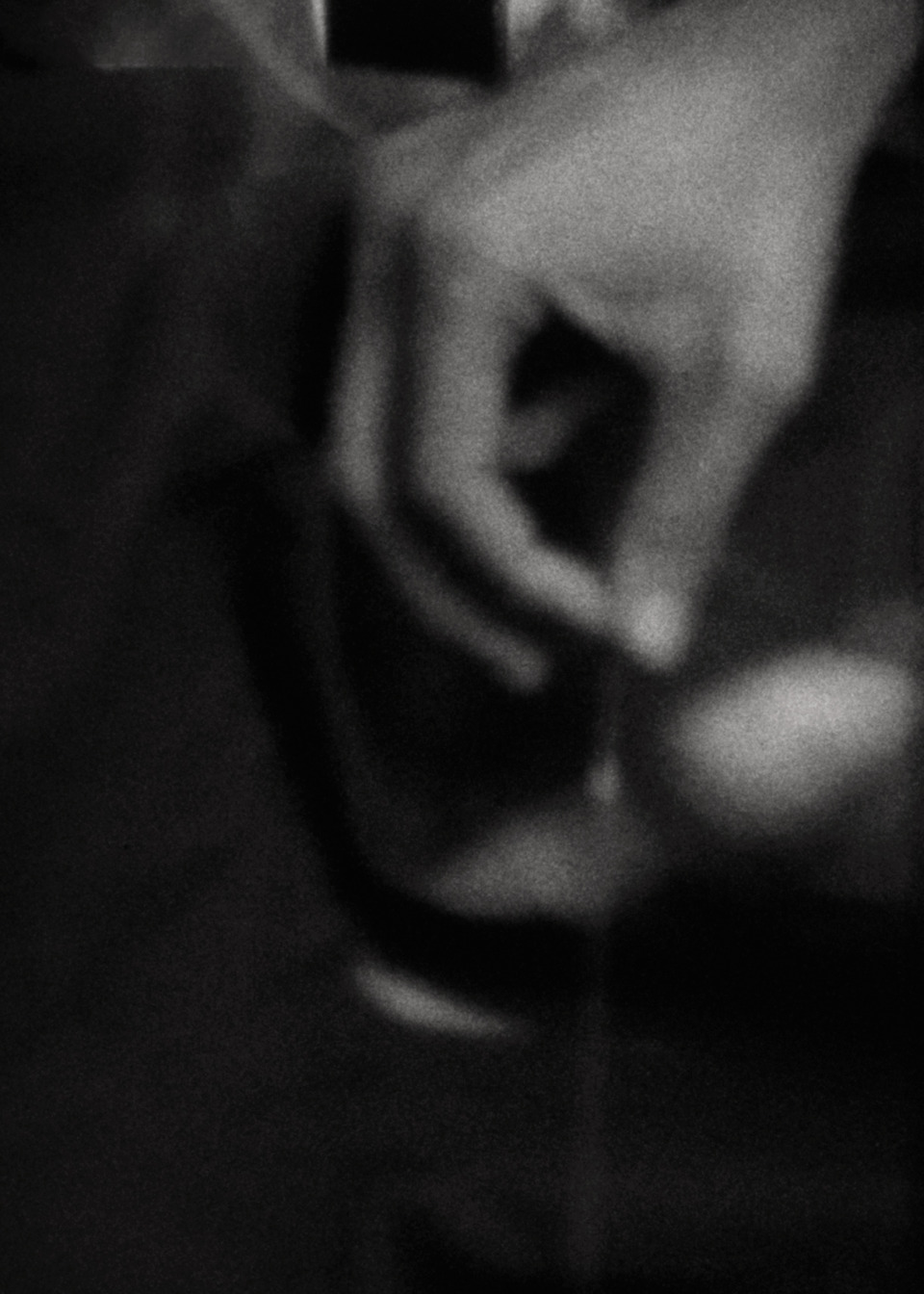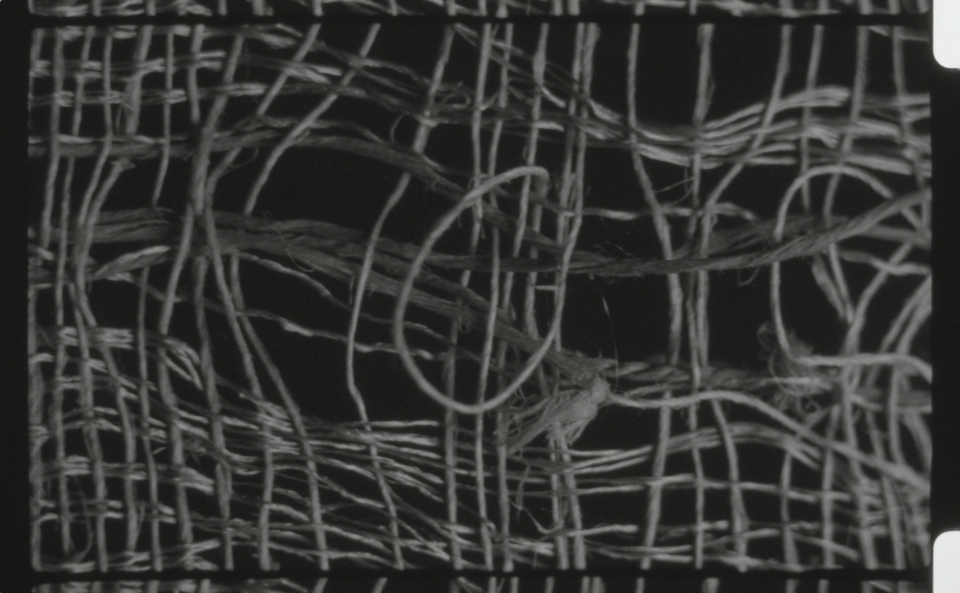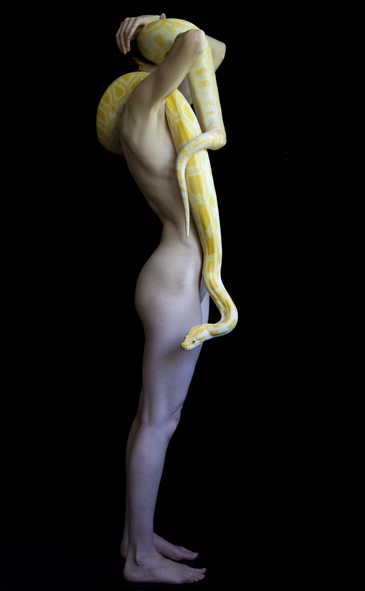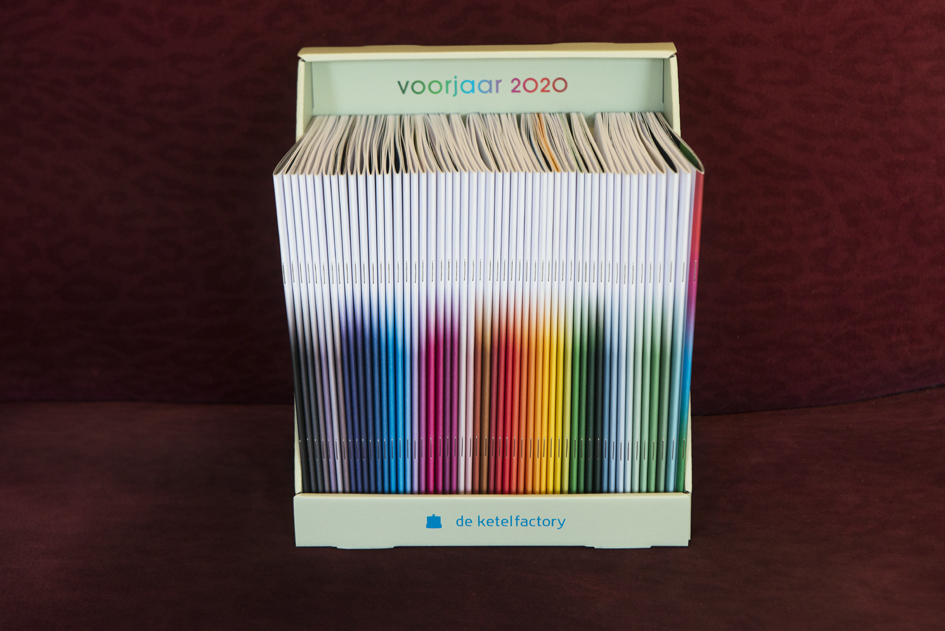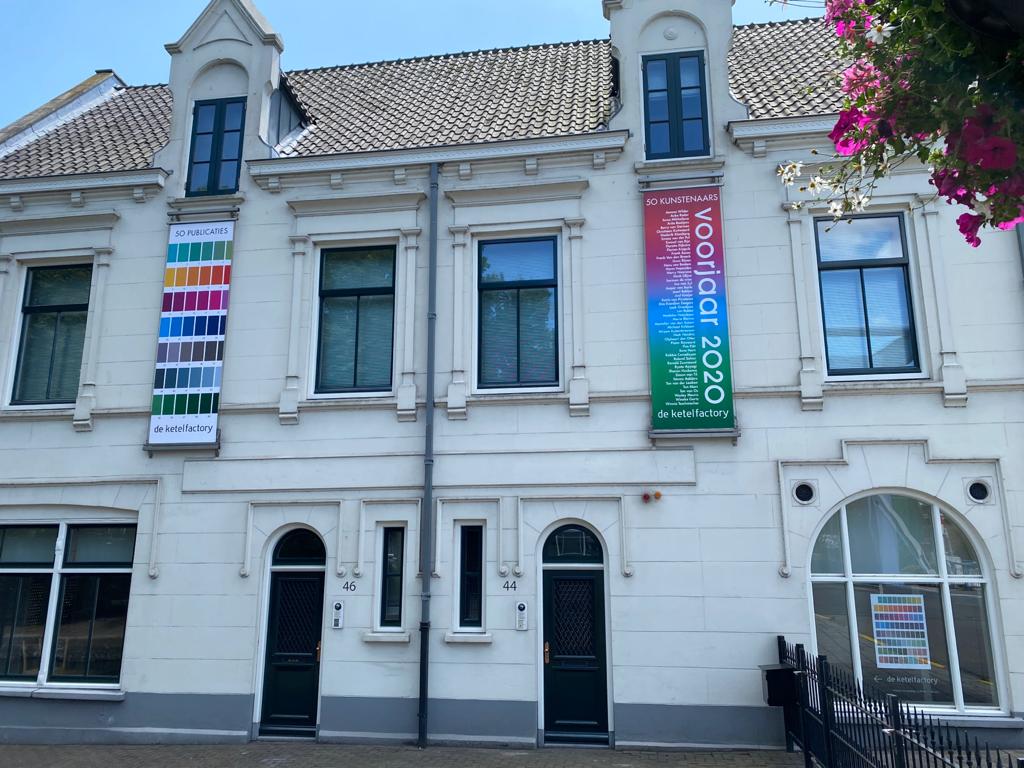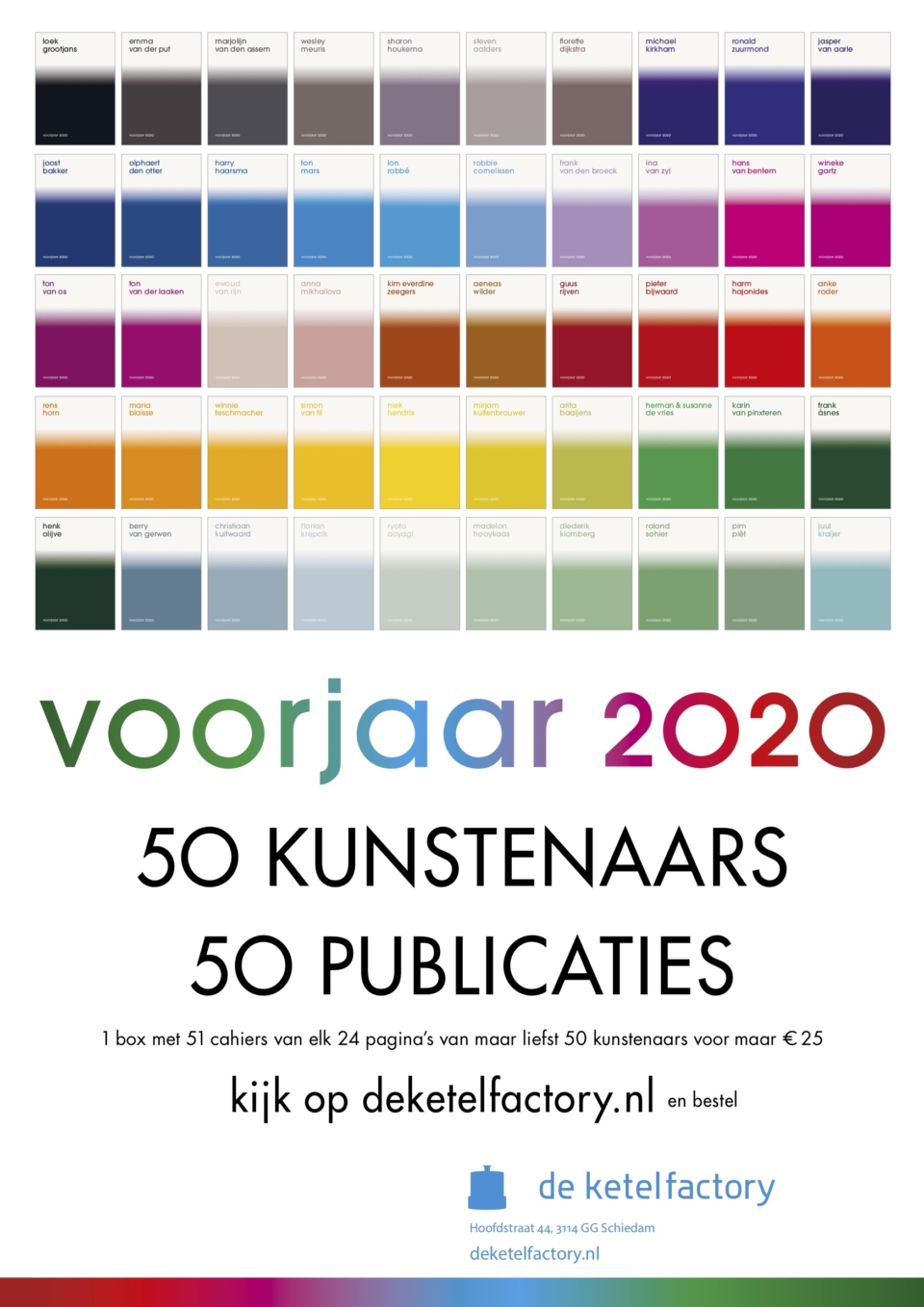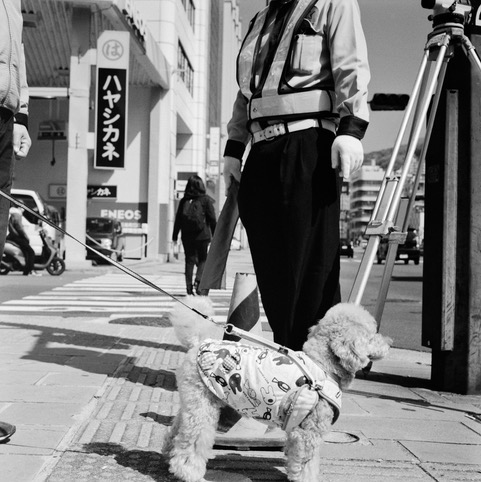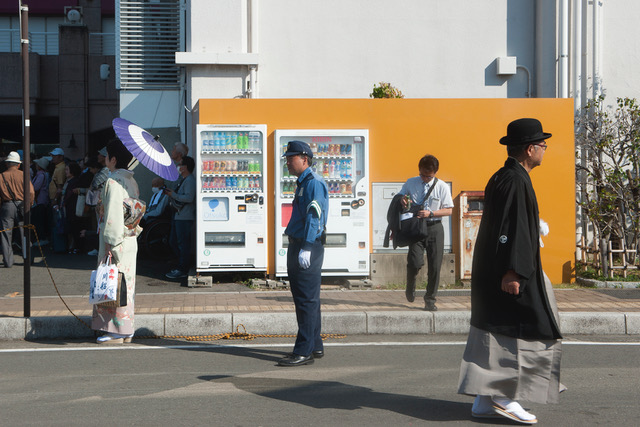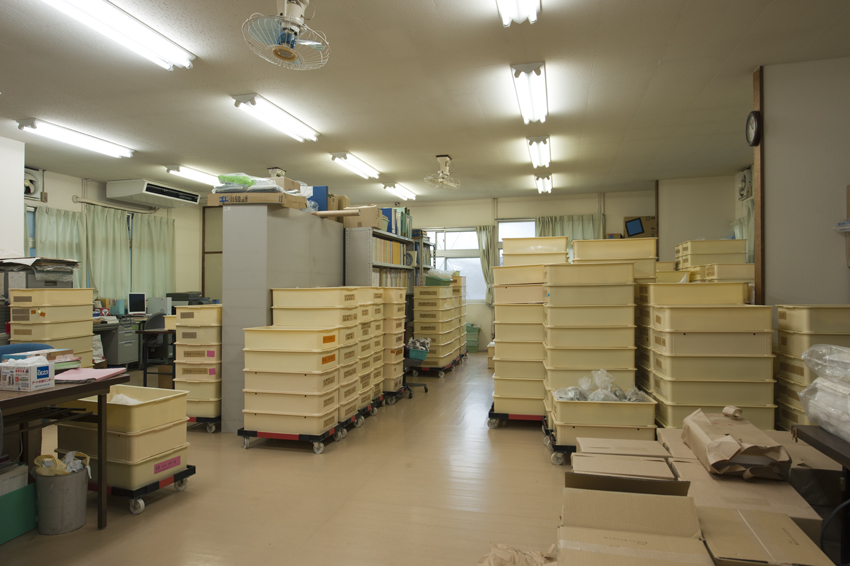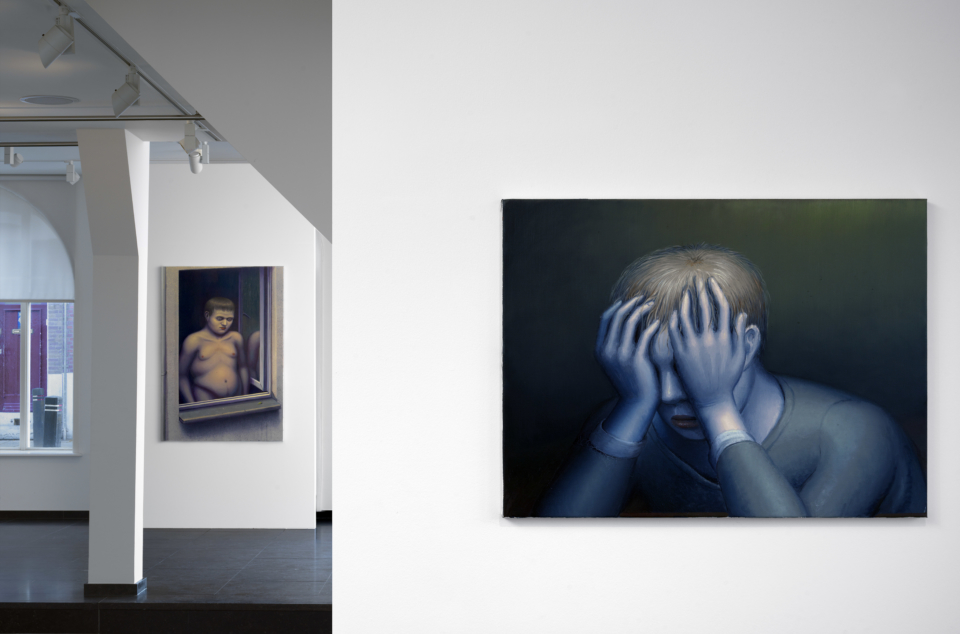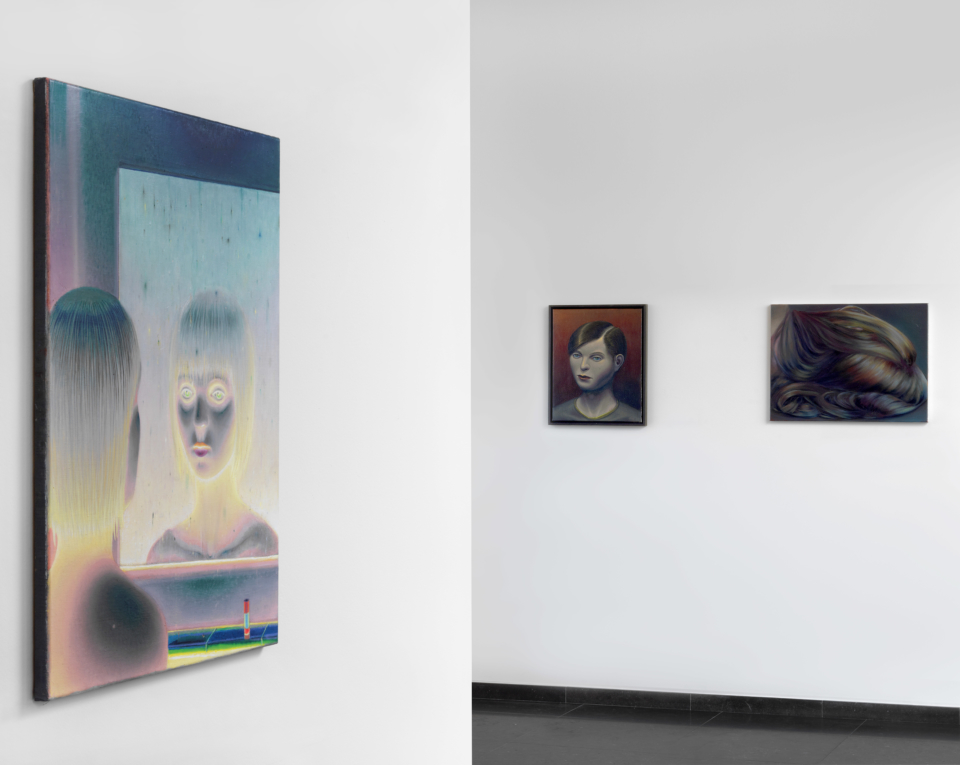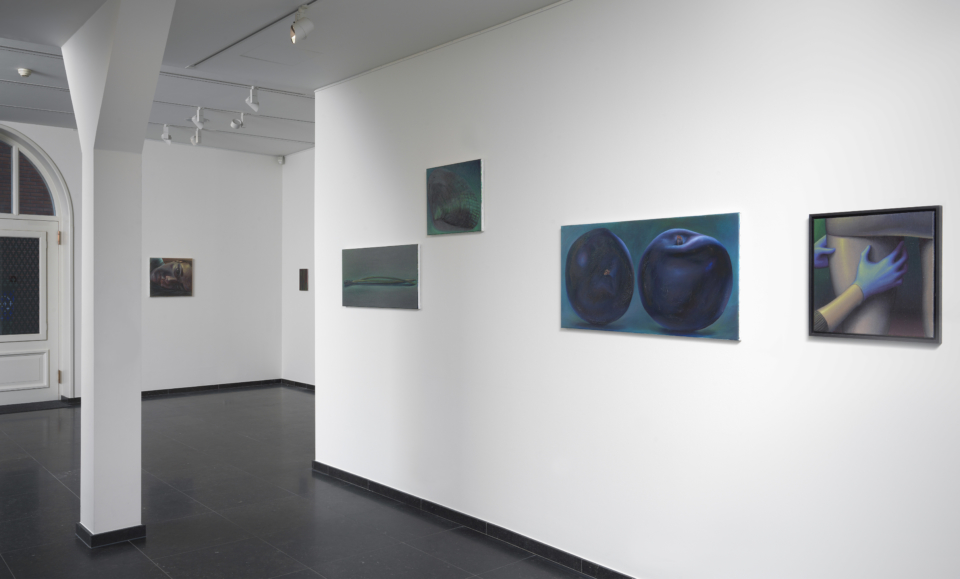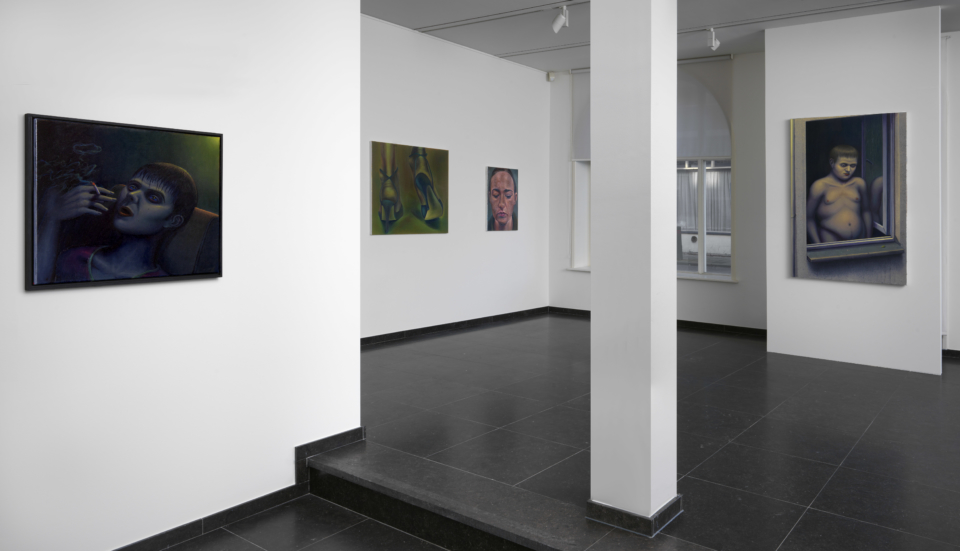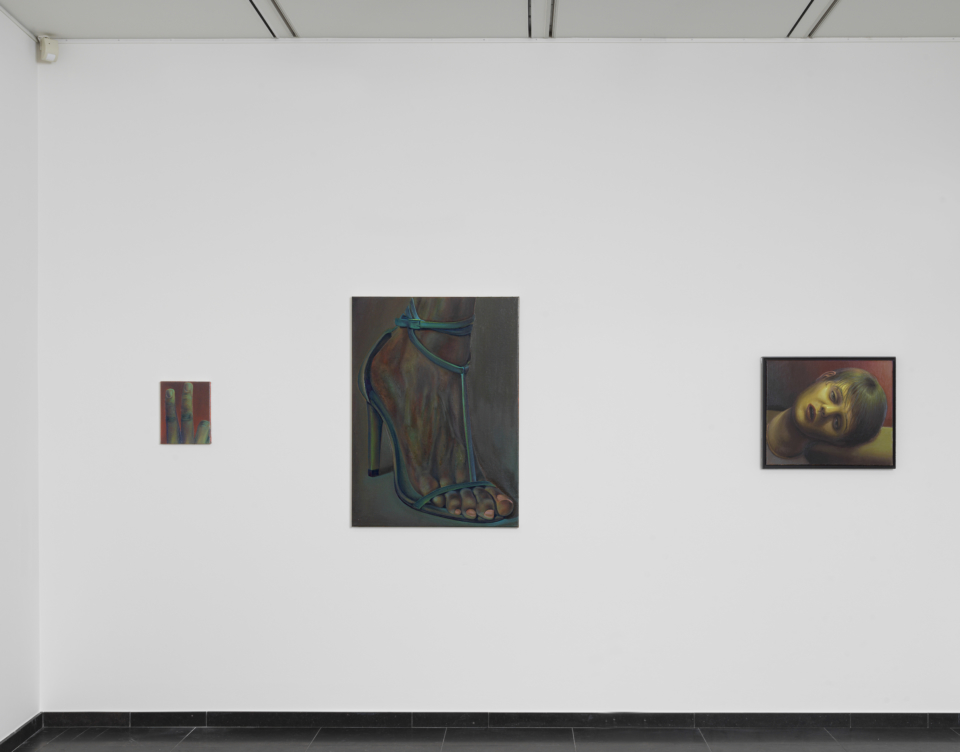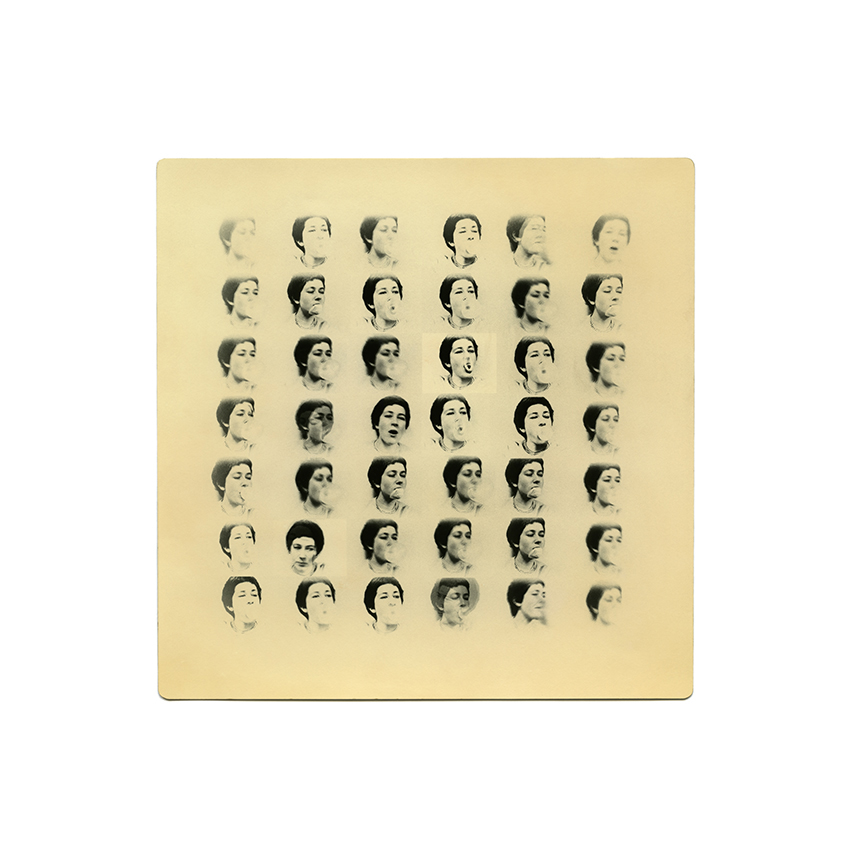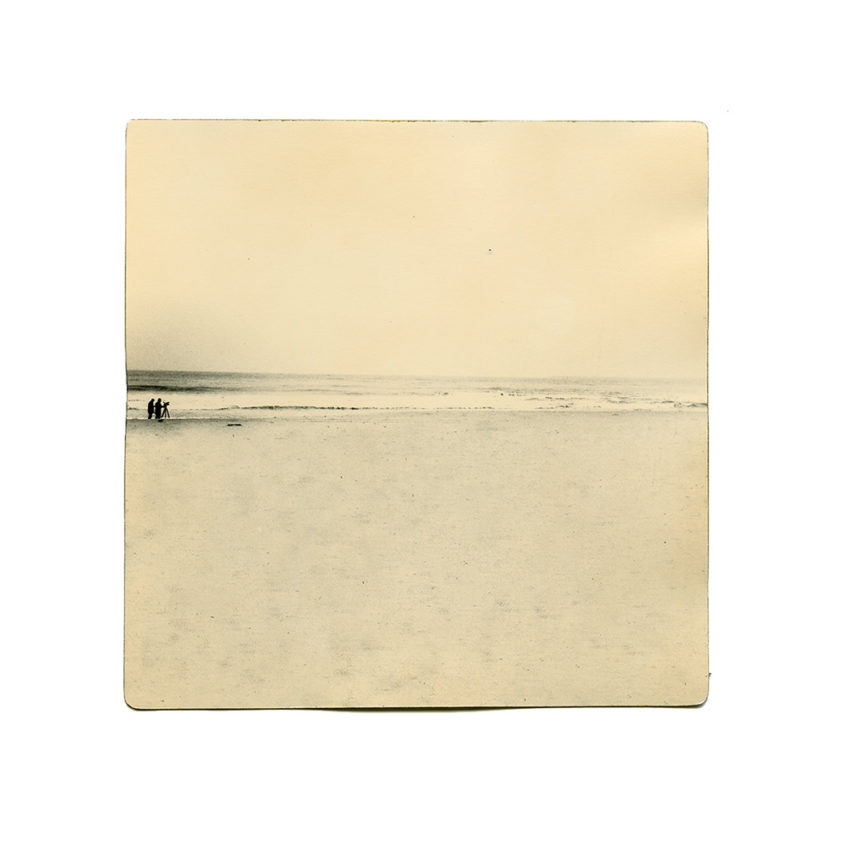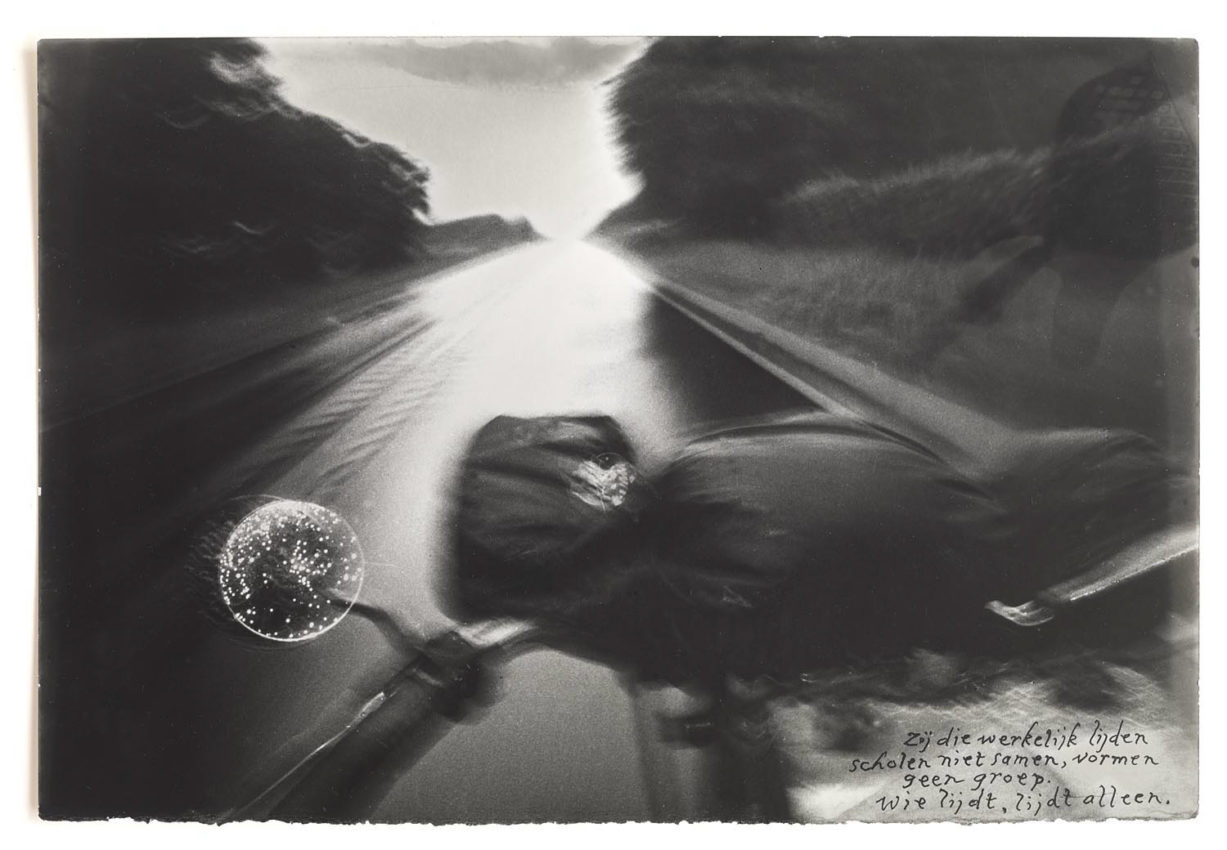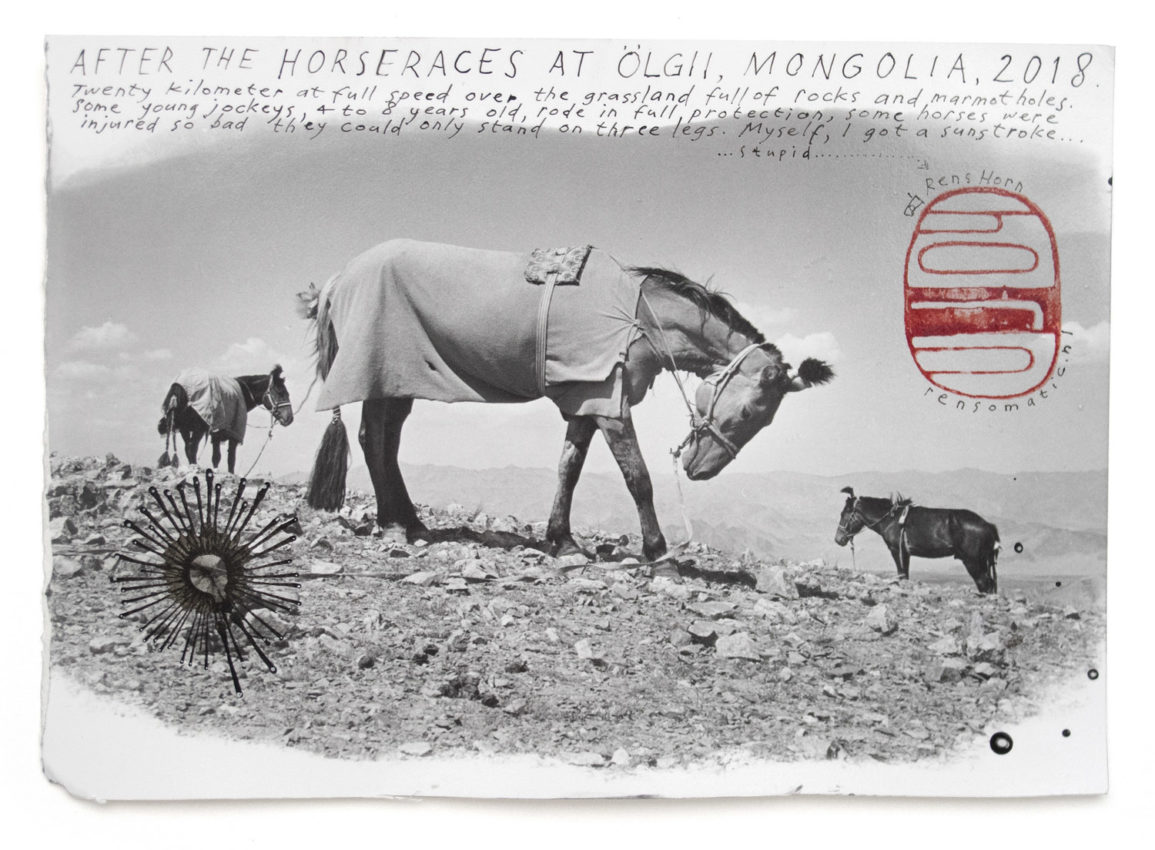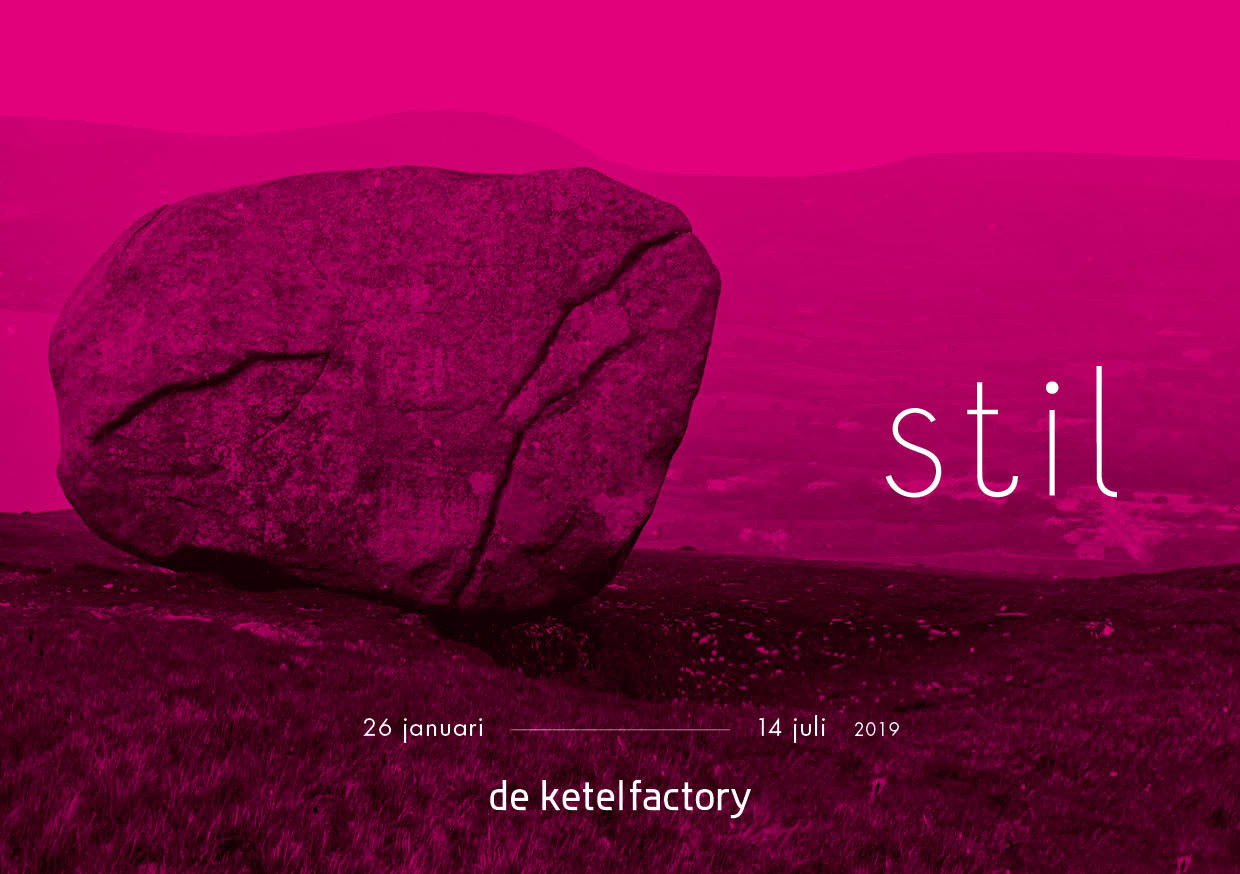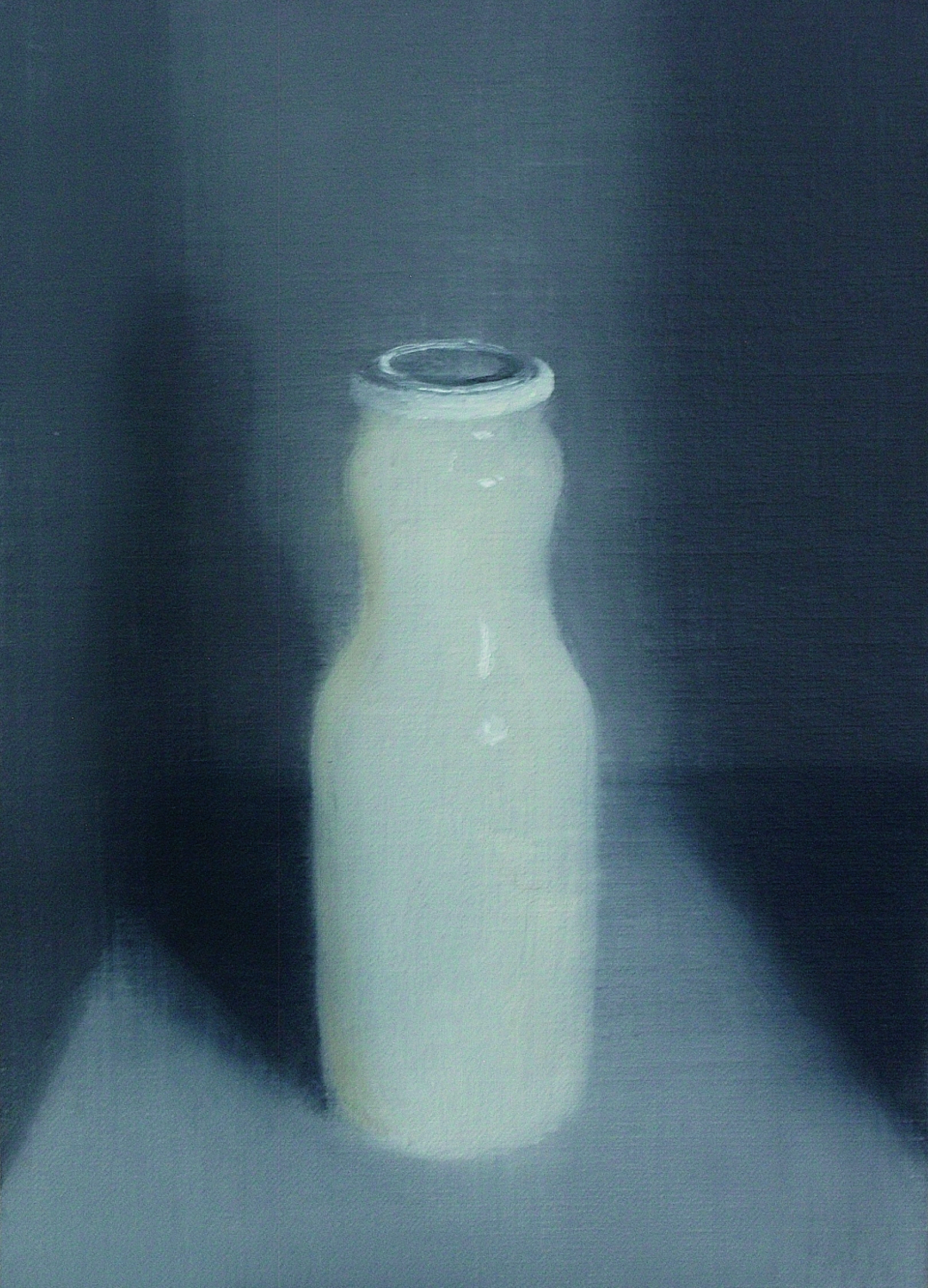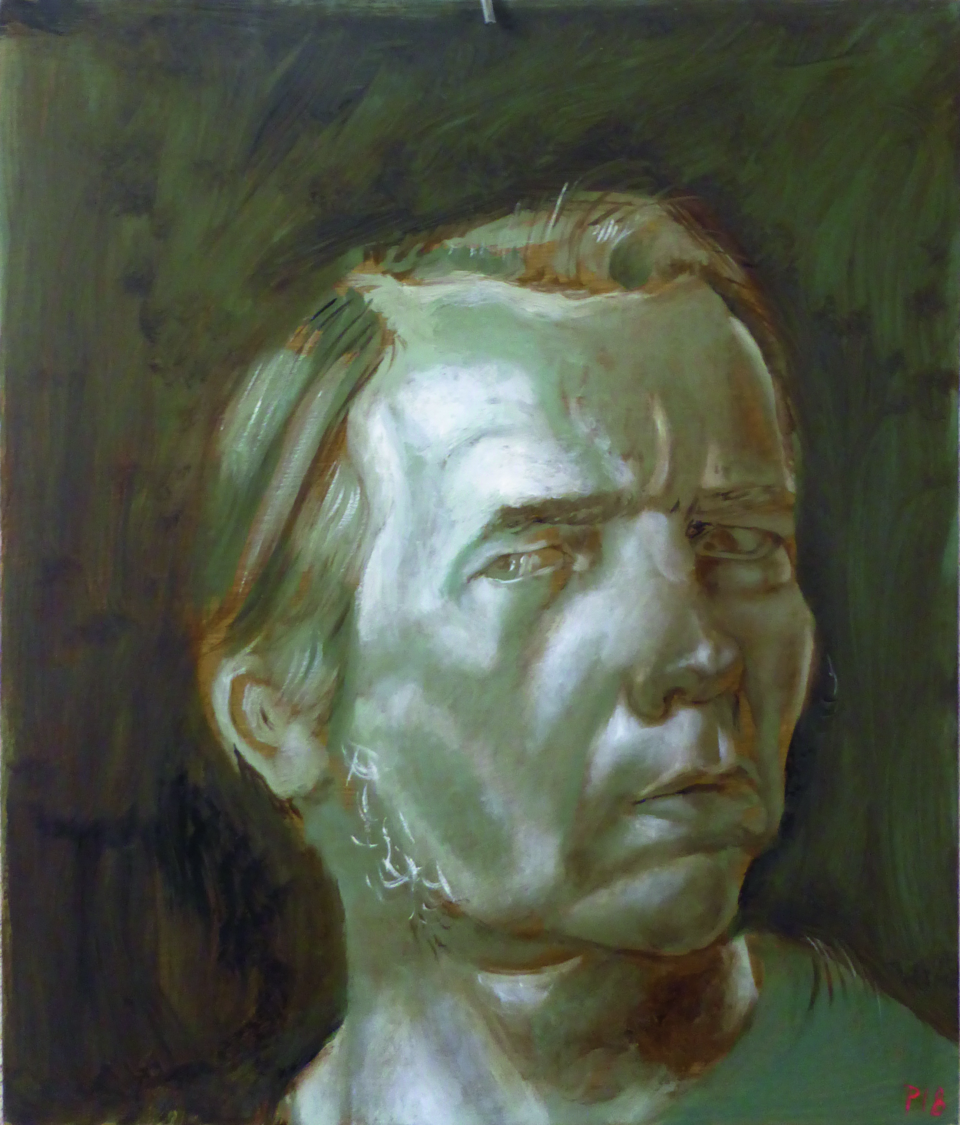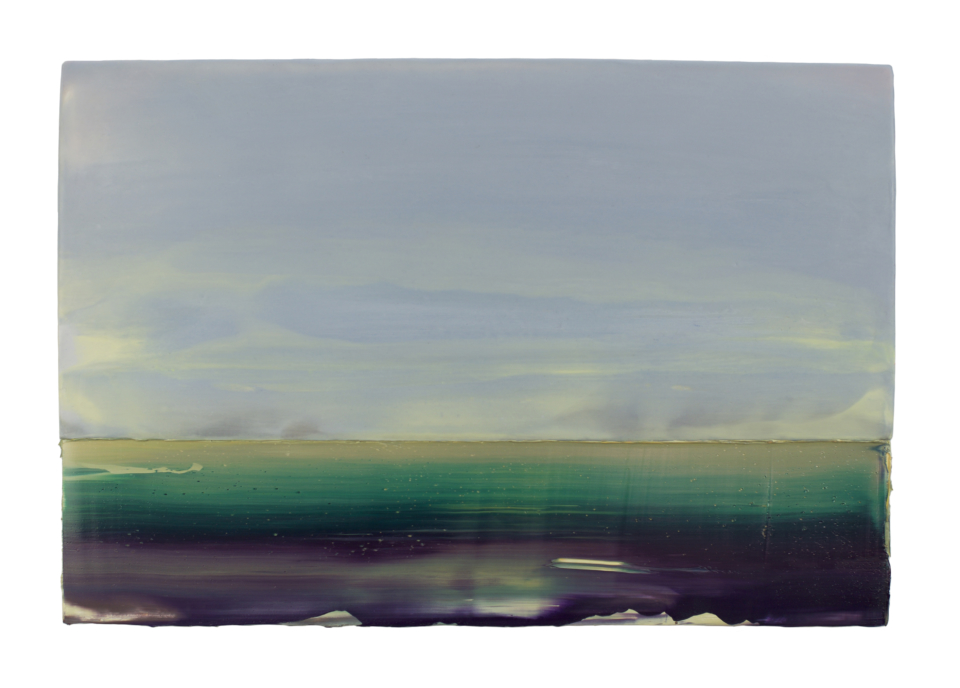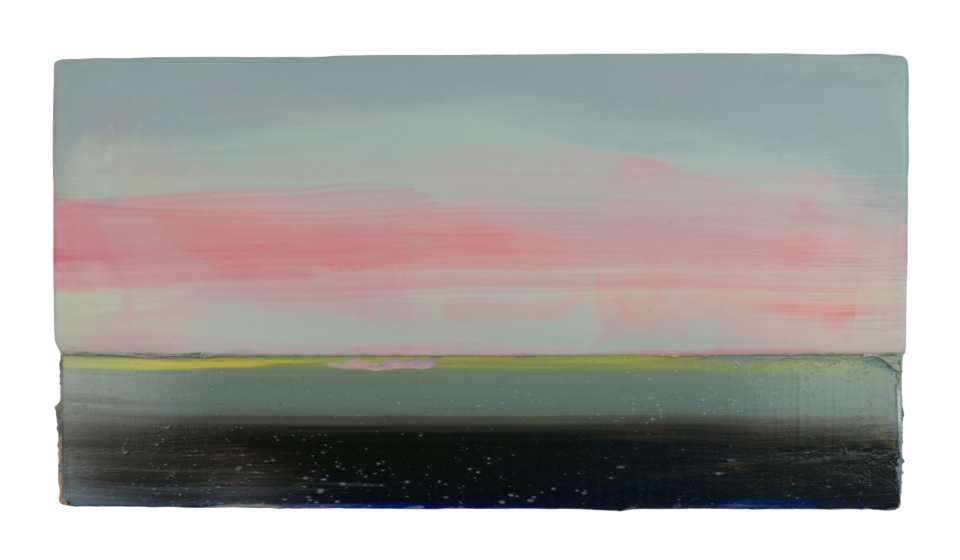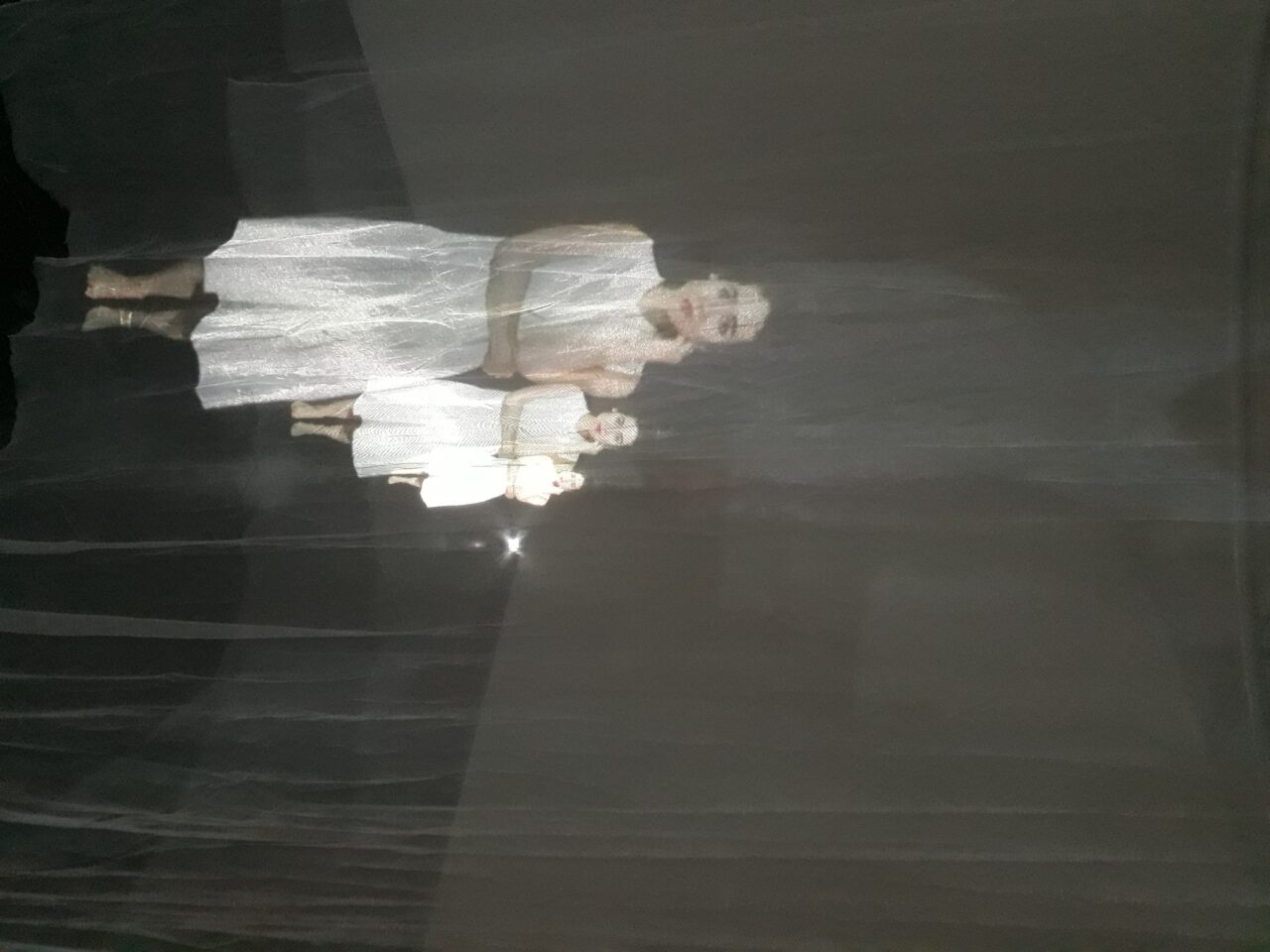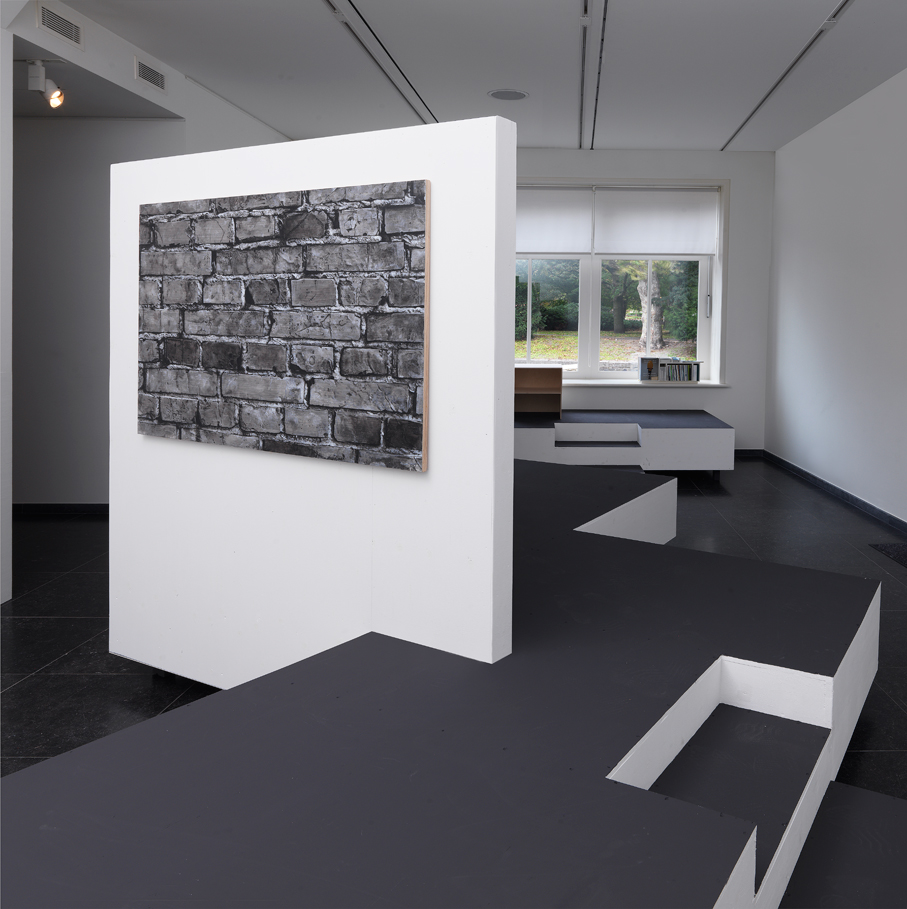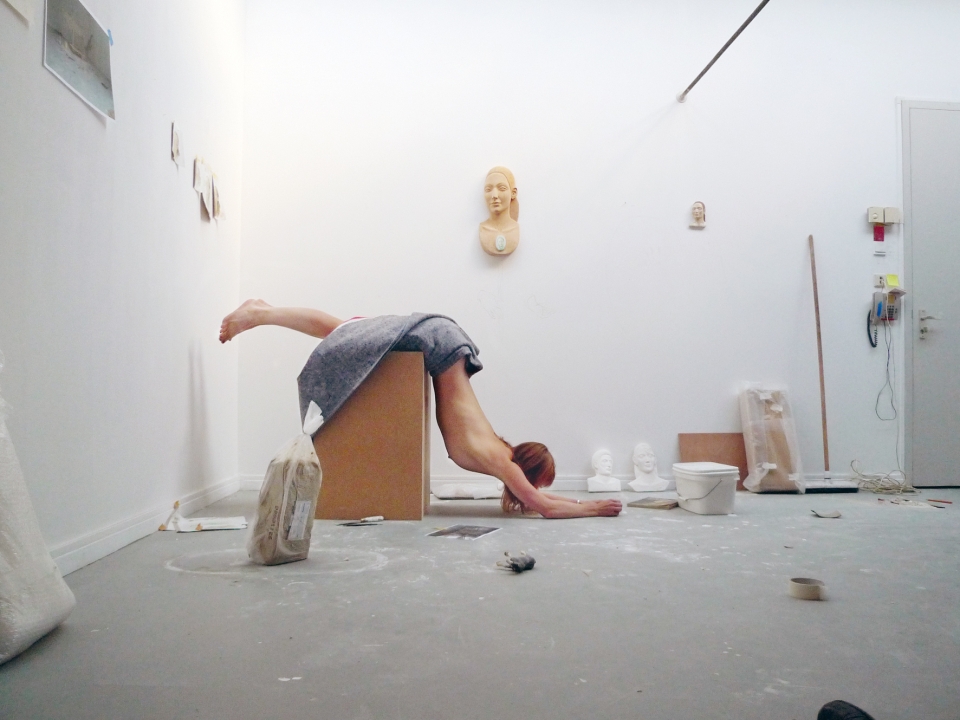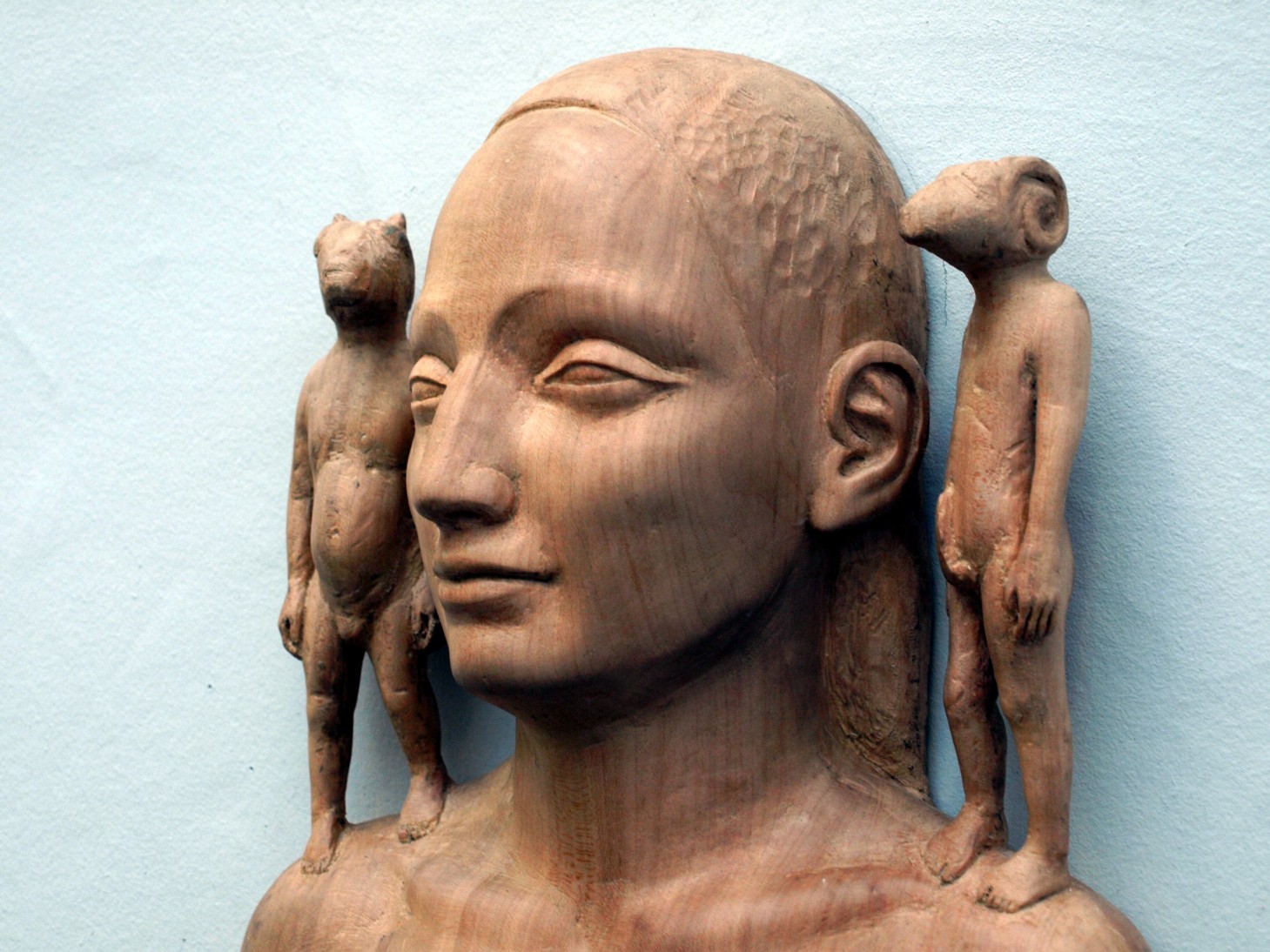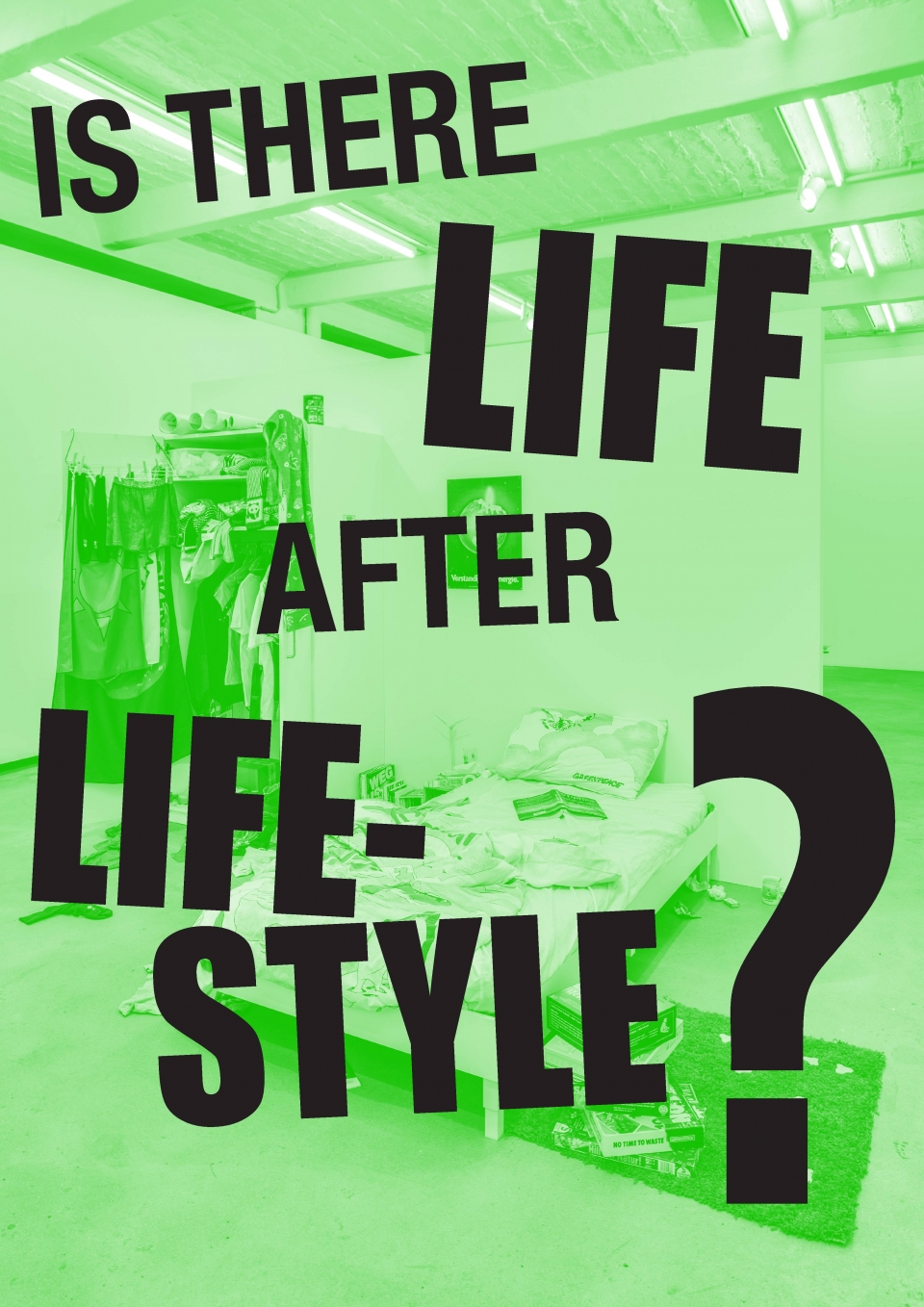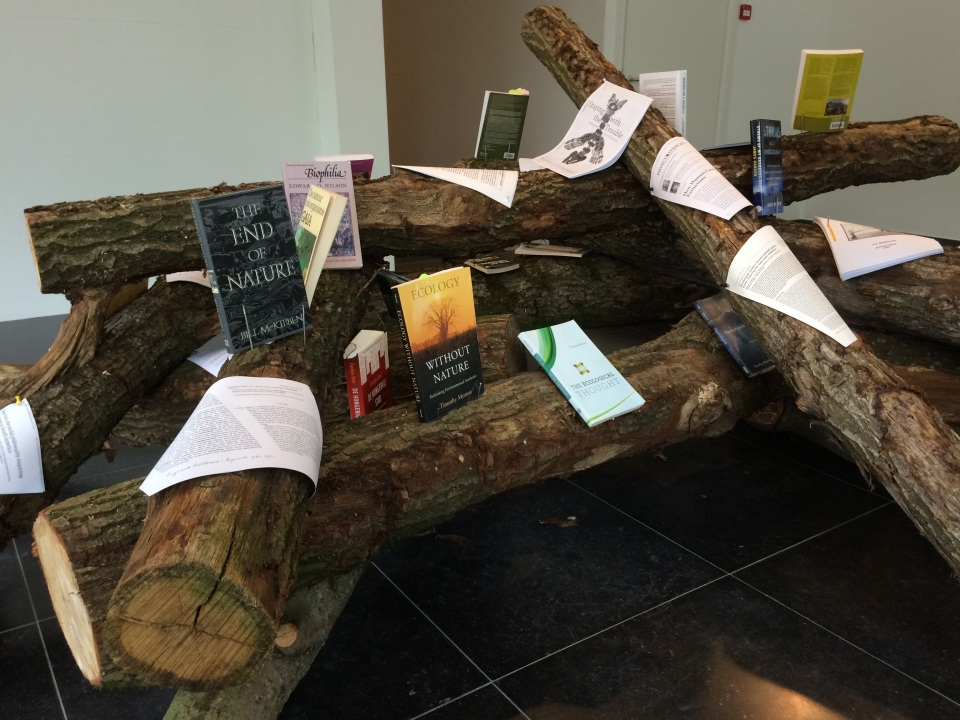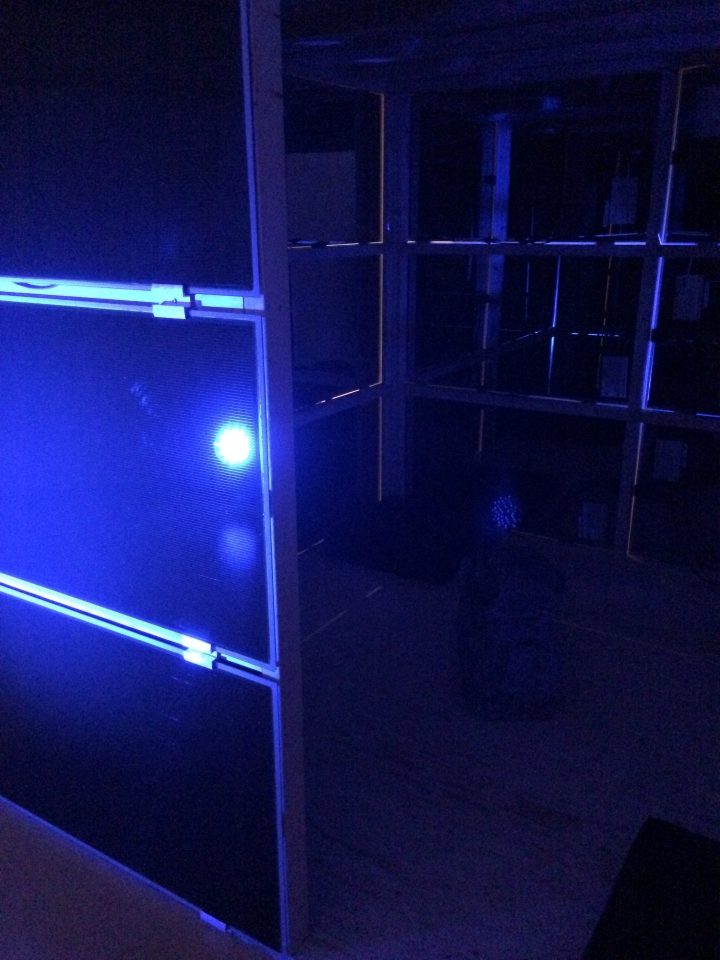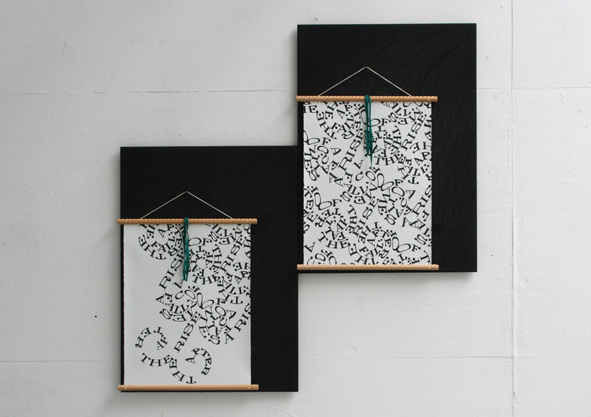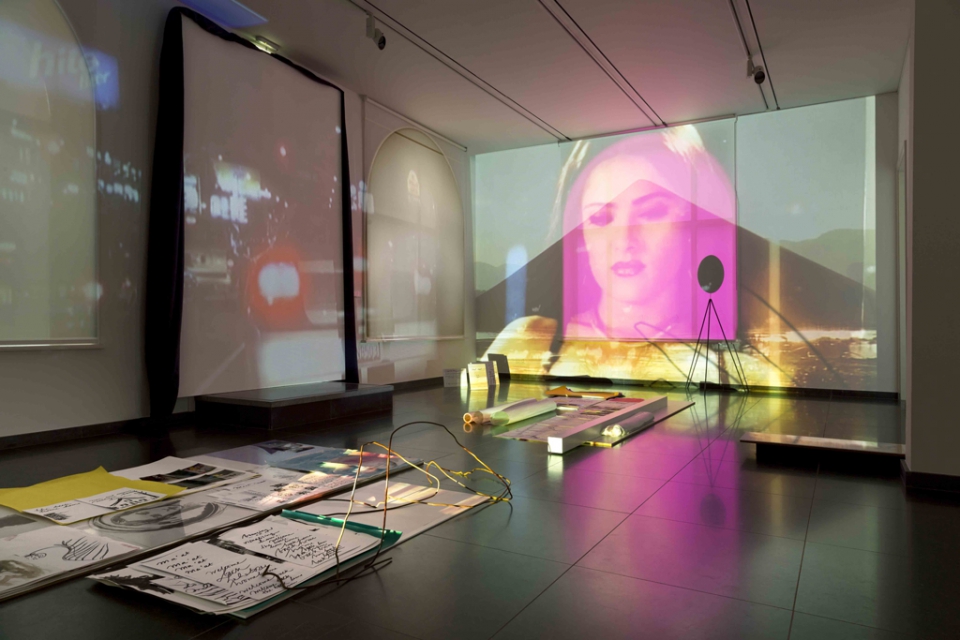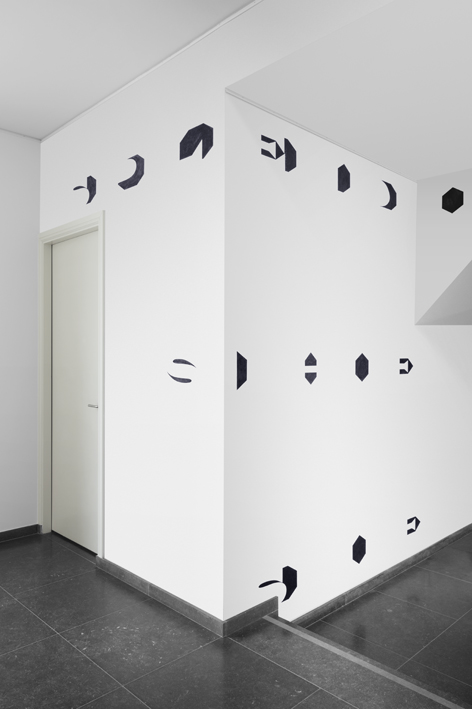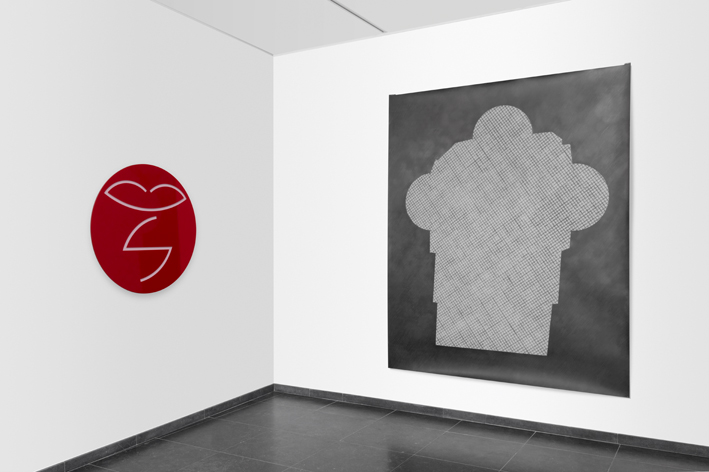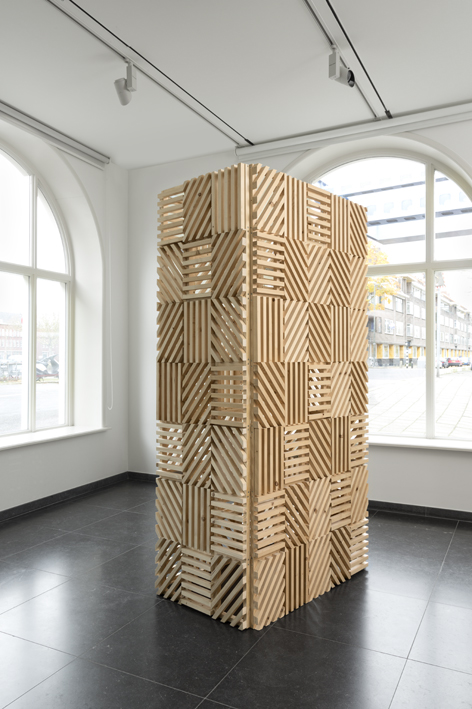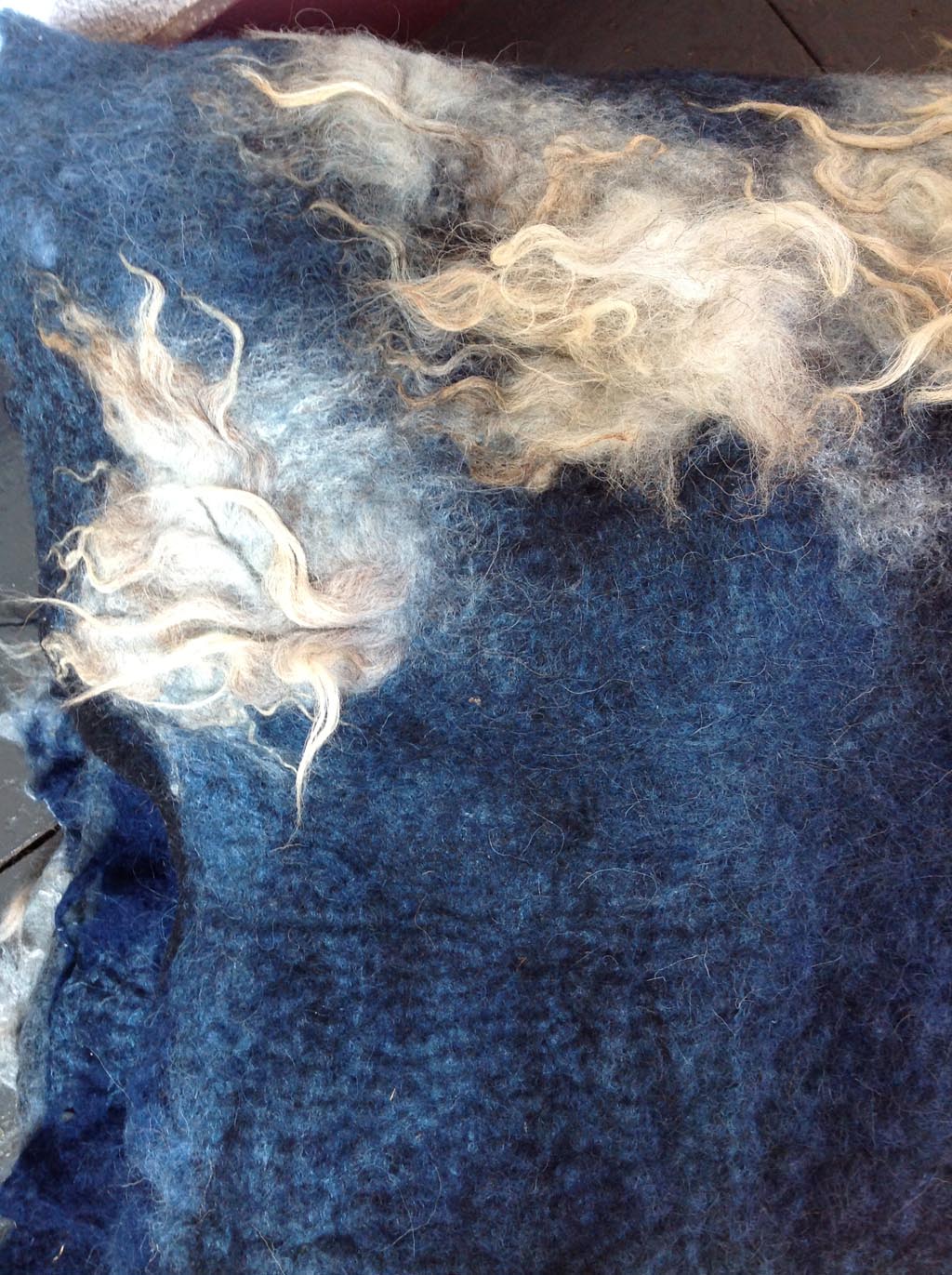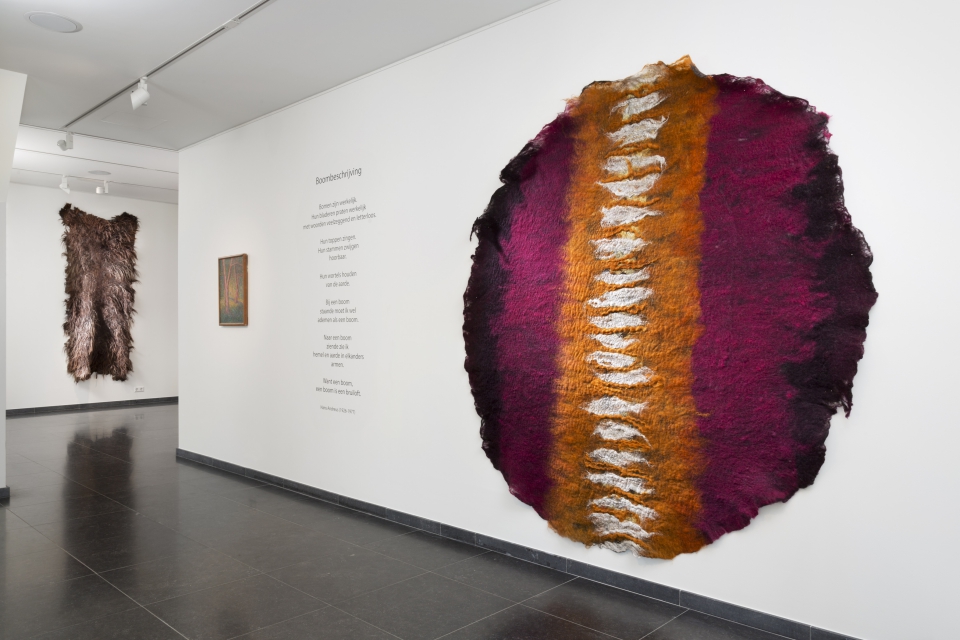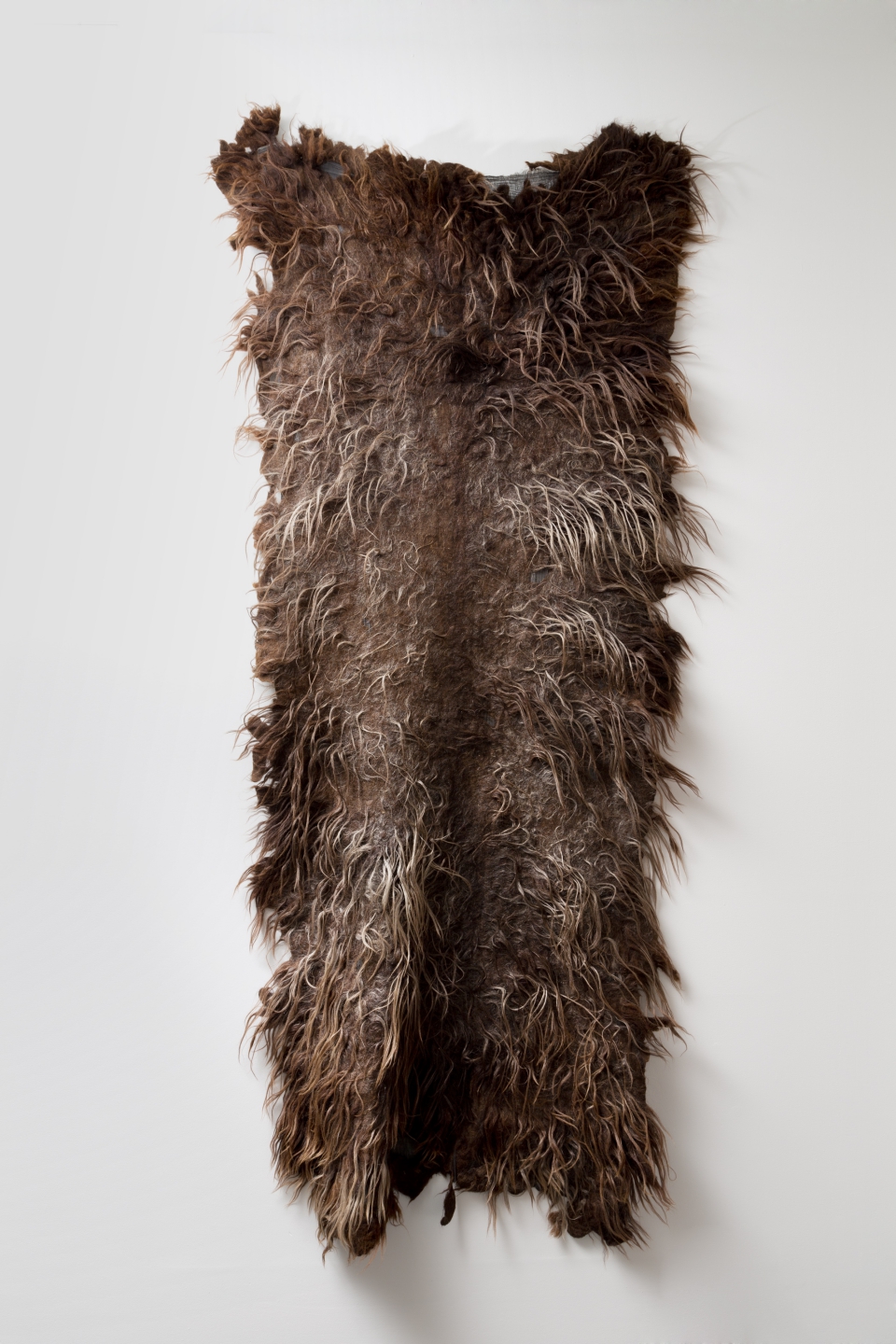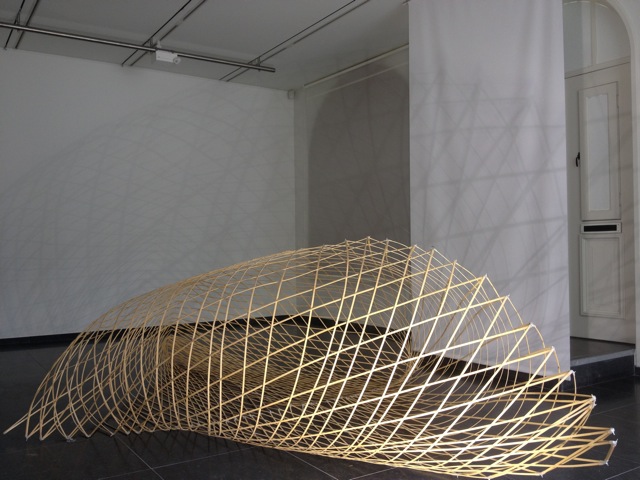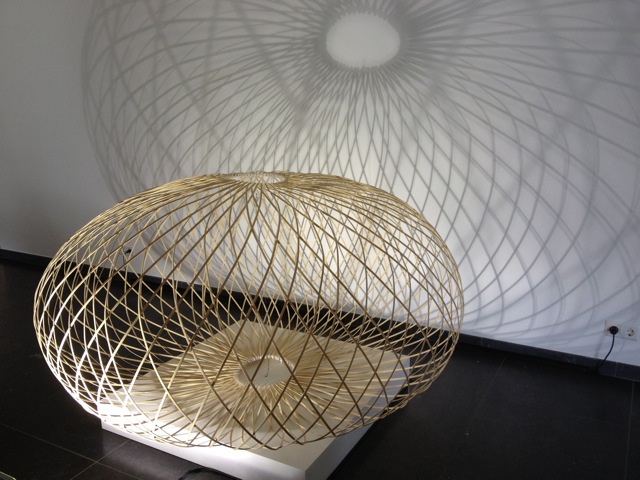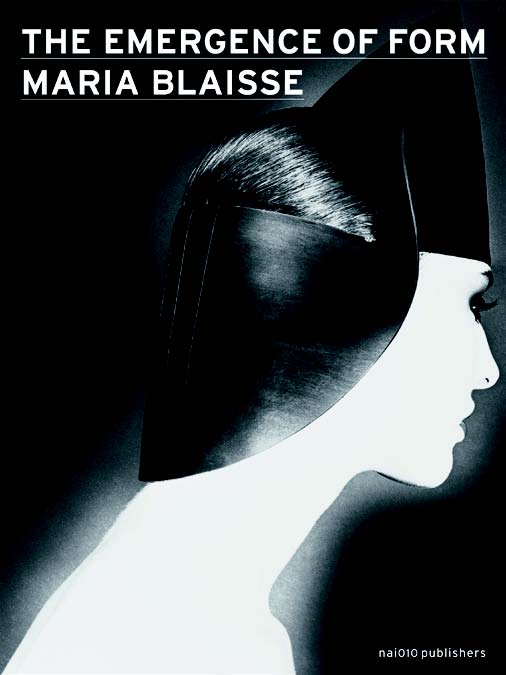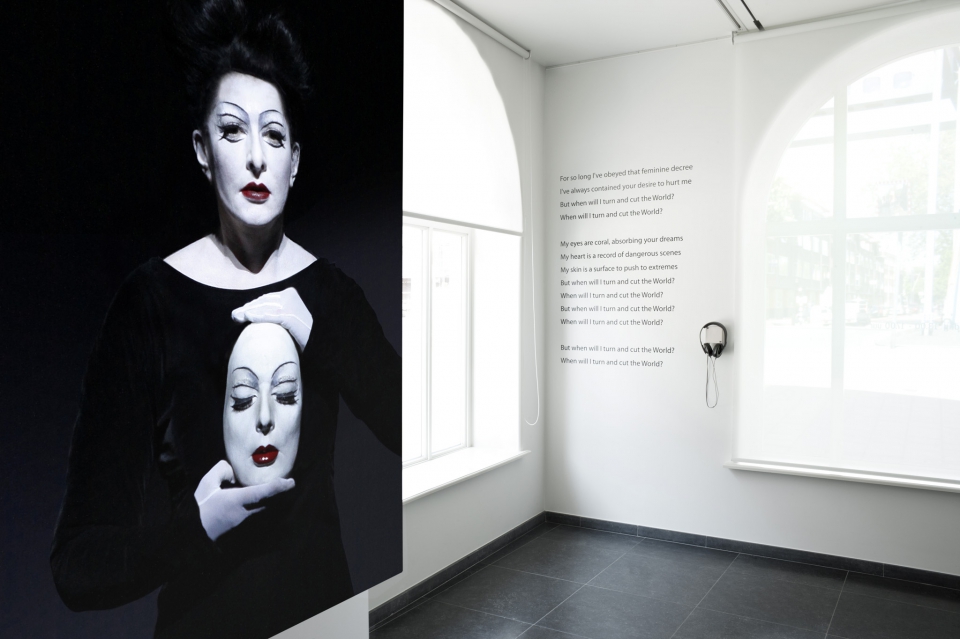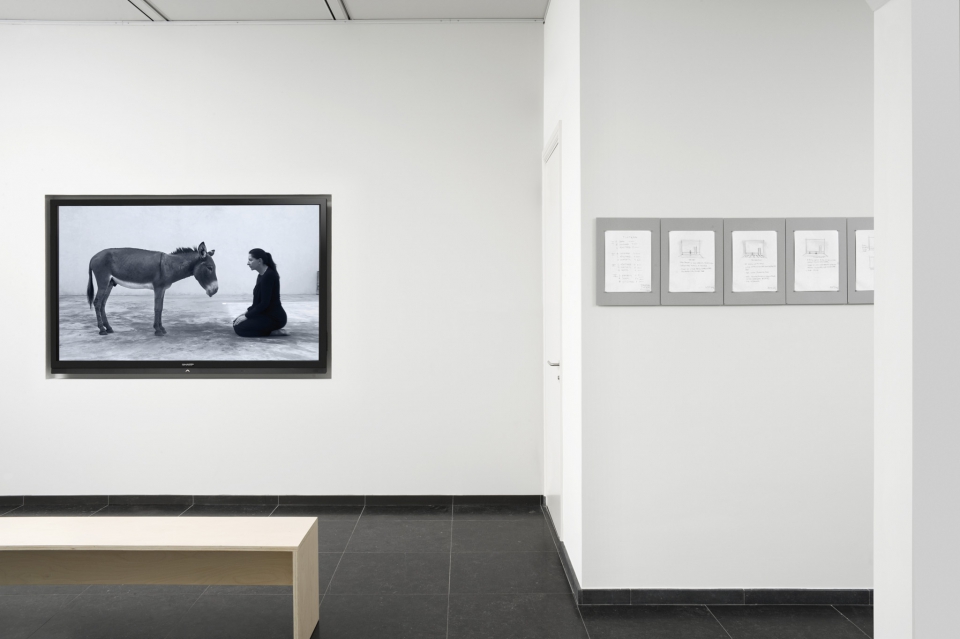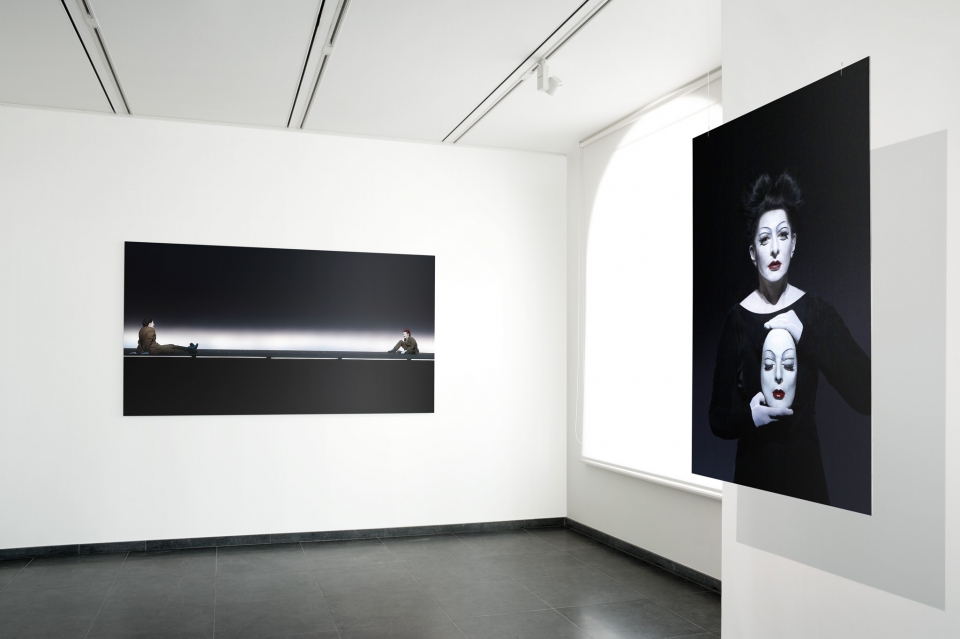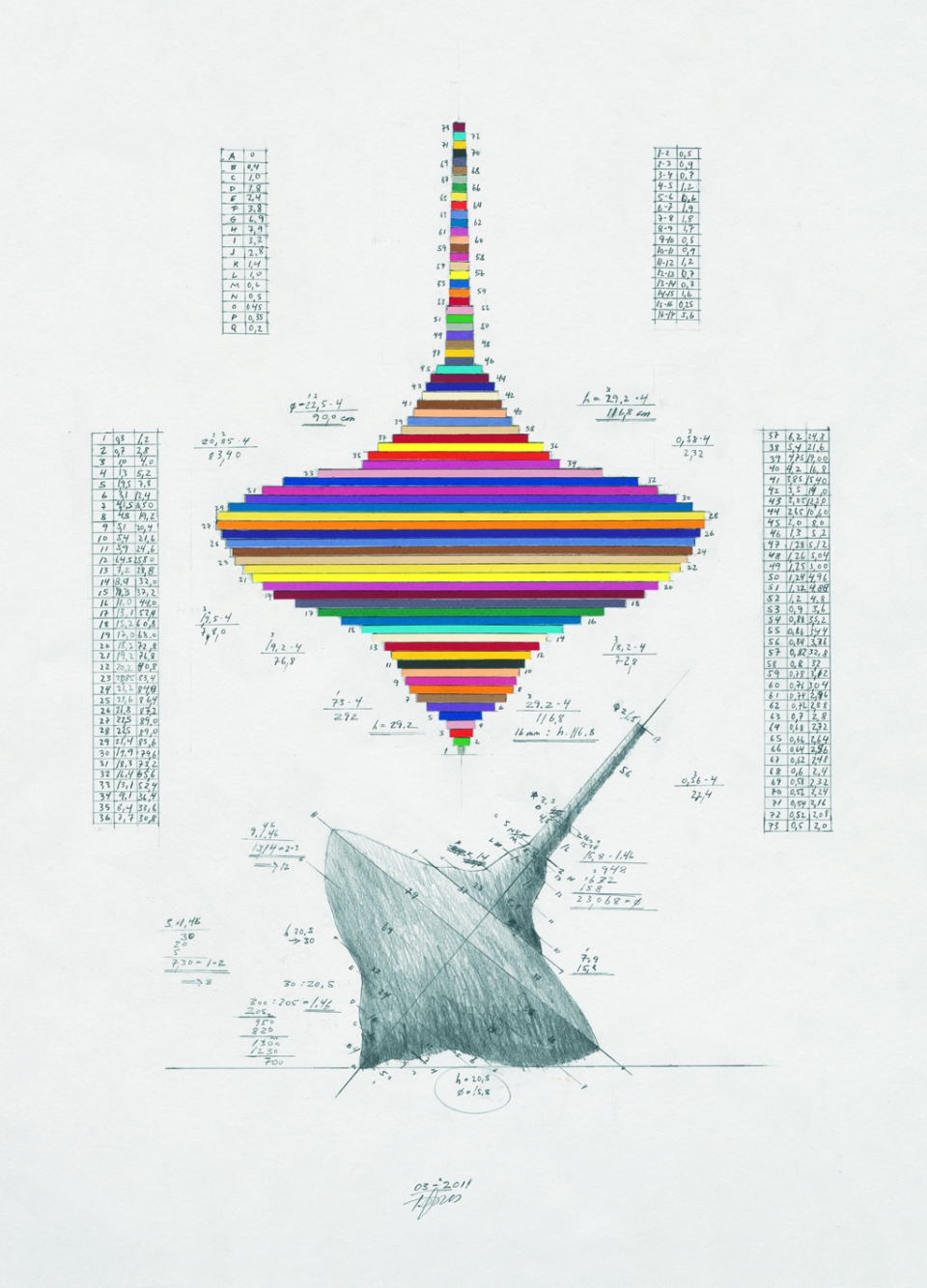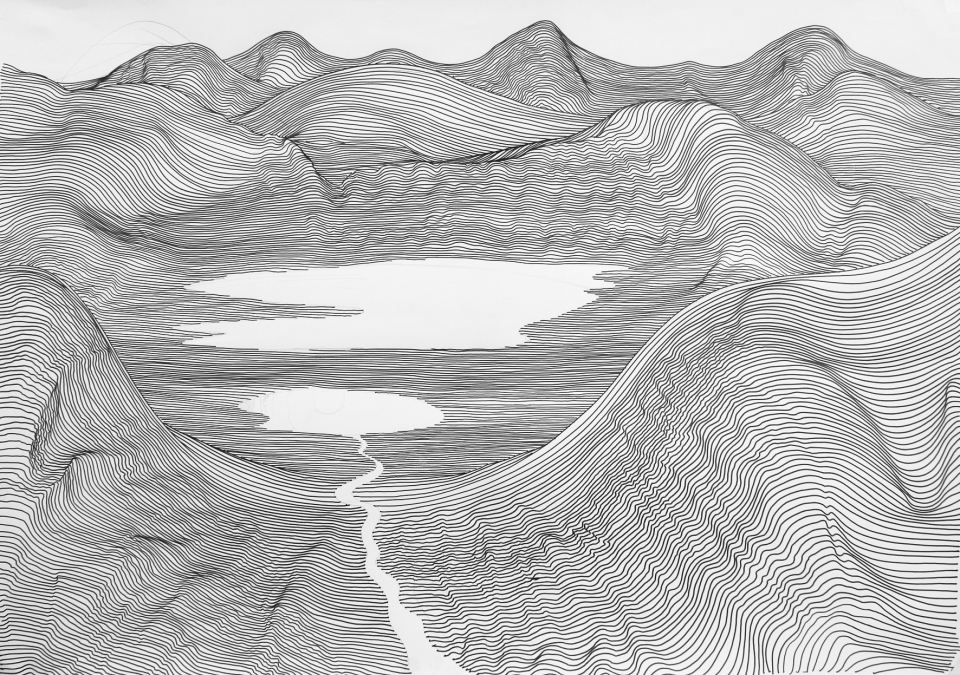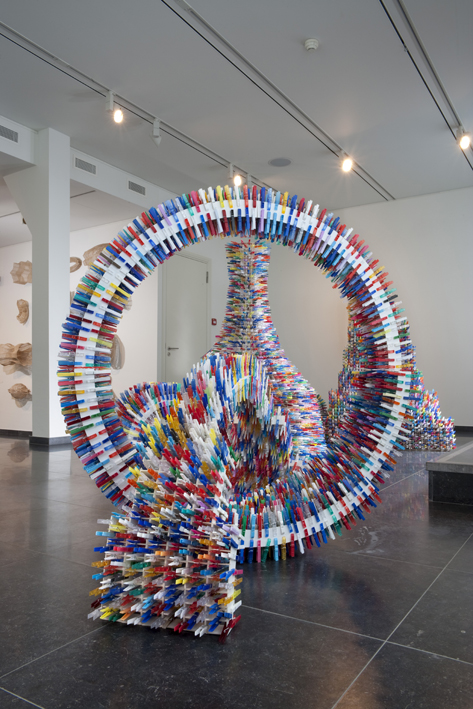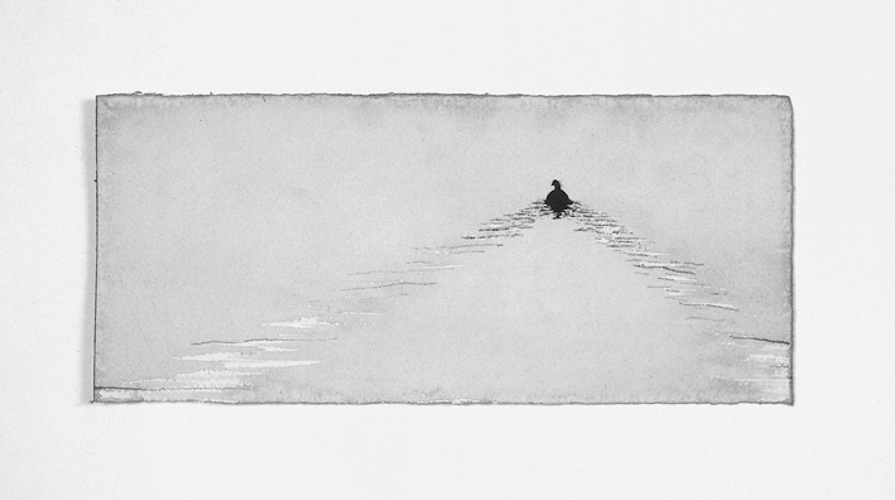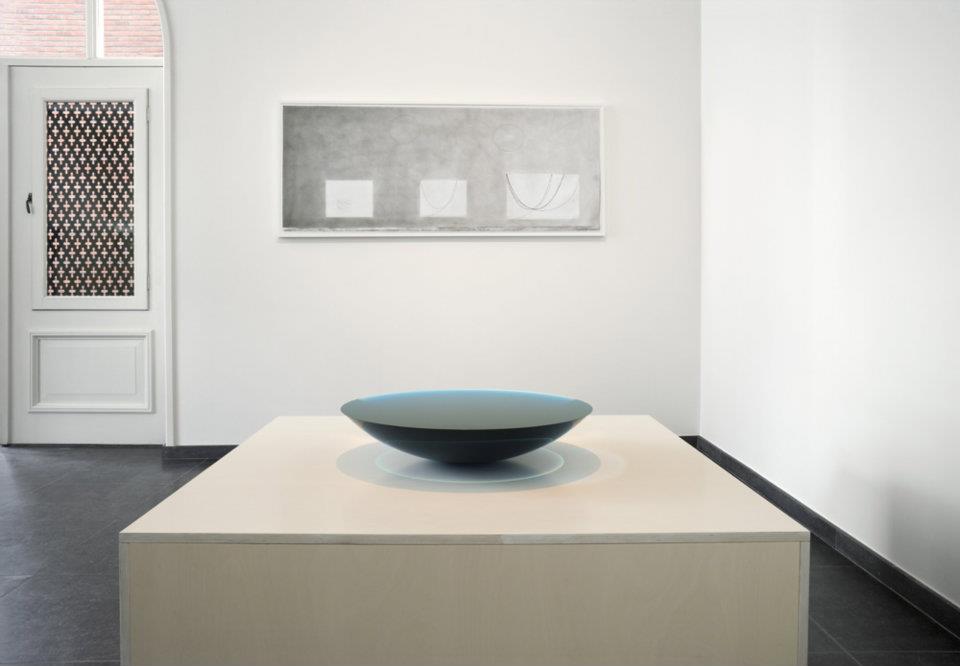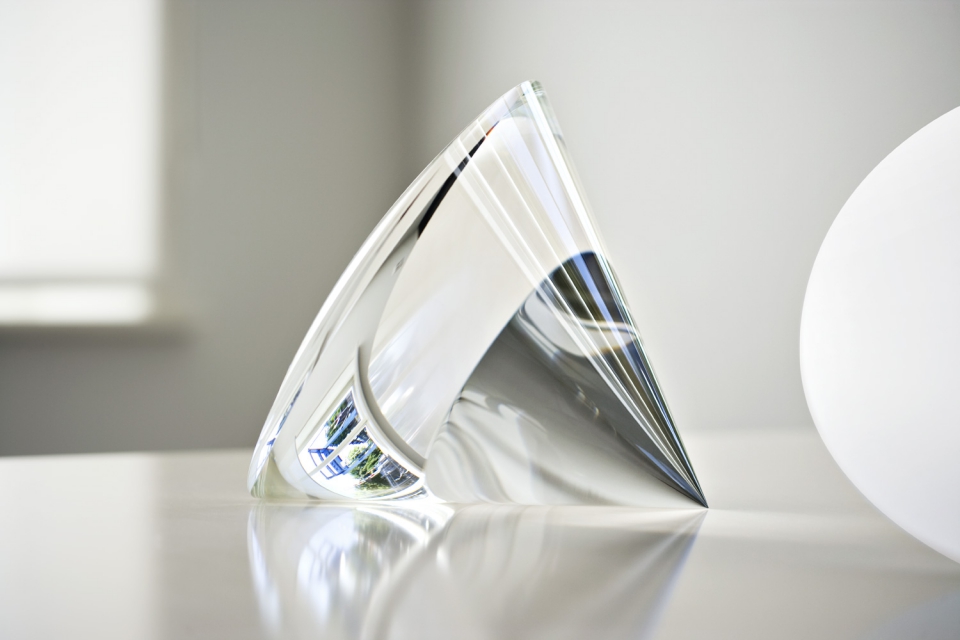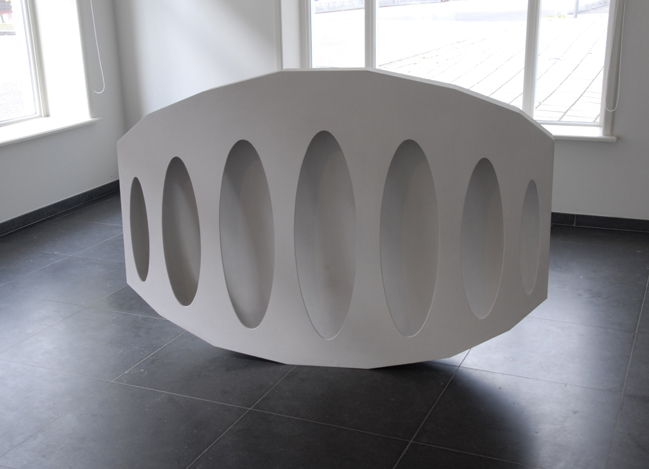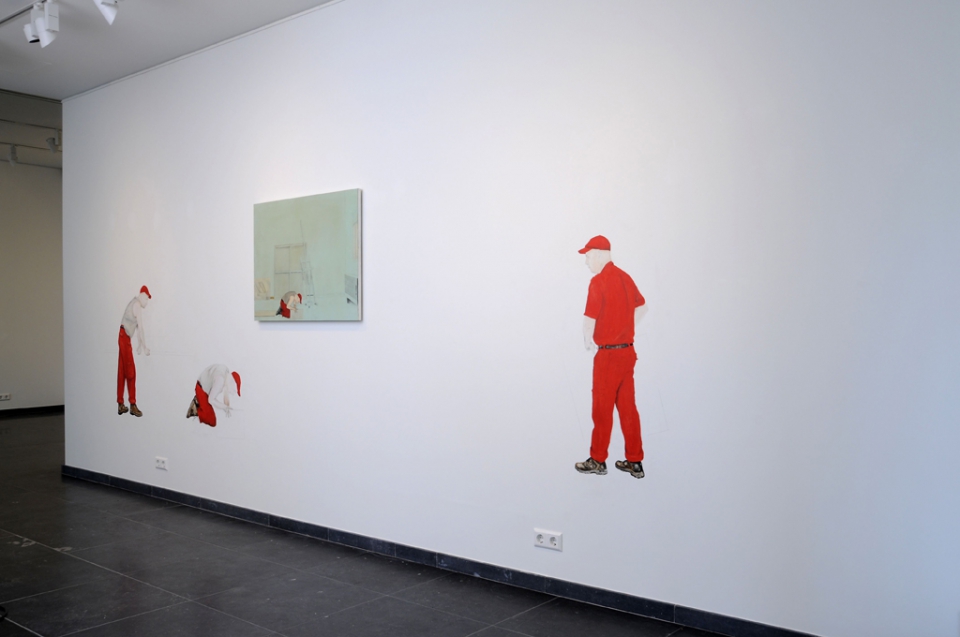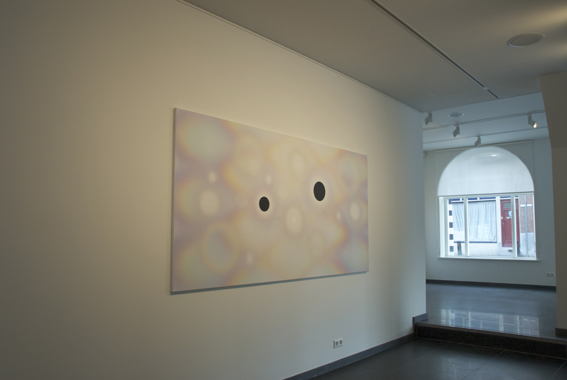25 November 2012 - 20 February 2013
At the invitation of De Ketelfactory, guest curator Florette Dijkstra has compiled the exhibition ‘unexpressive’. On view are large works and installations by seven artists who have contributed to the first four issues of kunstwordterugkunst, the ‘cahier for new art’ founded by Dijkstra. This cahier’s aim is to show art as directly as possible and make room for ideas about art. The publication contains the writings and images of writers and artists who think on the basis of art. They carry out the ideas that are discussed by them.
The artists of ‘unexpressive’ employ their means of expression in order to convey the inner nature of art. To them, the making of images and thinking on the basis of art intrinsically constitute a whole. Their expression is a result of the creative process, not its objective.
In the relatively small space of De Ketelfactory, seven large works or installations can be seen. Their clarity makes the exhibition appear not to be a ‘full’ space, but one in which the visitor can wander and let the inner quality of the works have their effect.
Emma van der Put
Emma van der Put uses the potential of film to ‘film against time’, that is to say to show the synchronism of a place. In her work she portrays a construct that can never be experienced by one person. The camera develops an objectivity that arises from its relative imperceptibility at the scene of the action and definite imperceptibility in the ultimate image. The person operating the camera can be nothing other than imperceptible. The resulting film is a condensed experience of time and space, which is stratified in its perspectives, both human and inhuman.
‘Maritime Festival’ is a combination of events that took place on the opening night of the Maritime Festival in Den Bosch. In the film, the seeming banality of the local feast gets entangled with the ancient relationship between skippers and the moon and her influence on the sea. The myth looms at the edges of the party, in the forgotten places where the songs echo, the water shimmers in the moonlight and the festival is forgotten. The running video ‘Ship’ shows the endless circles of a small boat on the sea, without the involvement of a single person.
Simon van Til
Simon van Til analyzes the qualities of a camera and utilizes them individually. Through his work photography arrives at more possibilities than those for which it was invented. He lengthens, for instance, the exposure time in order to record the distance that light travels between the sun and the earth; or he captures the light between sunset and sunrise. It could be said that a photograph by Simon is a film, were it not for the fact that film takes place on a single negative in which time, space and light are captured. In ‘Moonlit Disk’ a flat disk reflects the light of the full moon back to the moon: in its capacity to reflect, the disk itself functions as a moon. The photograph ‘From and To/ Elongated View’ shows a sun setting over the sea. The lens of the camera was kept open for 8 minutes and 19 seconds, precisely the amount of time needed for sunlight to reach the earth.
Mirjam Kuitenbrouwer
Mirjam Kuitenbrouwer’s ‘Recursion Cabin’ has to contend with a lack of view. The window on the front side of the cabin, which has the dimensions of a gigantic super-8 viewer editor, merely allows light in. The diffuse light that enters it allows for contact between the inside and outside, but blocks any actual view. ‘Seeing’ takes place in the cabin. In it, everything to this end is available: a large optical instrument, an extensive collection of books on windows, a photograph of the cabin in the landscape — or of a model of the cabin, since it’s never quite clear where we are. But the following can also be said: inside we see more of the outside than would ever be possible outside. The cabin is recursive: one thing repeatedly leads back to another.Seeing takes place in the room or camera. That’s where the artwork is, not outside it.
Wesley Meuris
Wesley Meuris undermines the fundamentals of exhibiting art. He breaks down the standard contexts in order to build anew on the basis of the artwork’s logic. By doing so he re-articulates the circumstances of art and transforms these into its heart. Although this is done in a literal manner, the construction remains an ideal in which the artwork is a center that never becomes an ‘image’. It is not the art world, but the art itself which determines what the work requires. It takes back the control that it had relinquished over time. ‘Exhibiting’ is the work’s beginning and end. The series of maps of imaginary museums, for instance, offers an opportunity to wander about an exhibition space that has been designed around, or rather on the basis of, a work of art. The ‘Project Advertisements’ announce new exhibitions such as ‘The Great White Journey, a dazzling art exhibition.’ This is the first art biennial on the ‘Seventh Continent’ that can be visited in an outdoor setting at thirty degrees below zero.
Philippine Hoegen
Philippine Hoegen produces installations that show the onset or, in fact, the remains of a presentation. But anyone who takes a seat in the work decides that it’s going to happen here and now. ‘Interior Monologue, a response to Memo’ was made in response to Michel van der Aa’s musical work for violin and tape recorder. This is an installation involving a photograph, a video, a monitor and a found object. Inherent in those media are the conditions for art: recording, identification, framing, rendering. The components of the work derive their potential from each other and are able to achieve more jointly than individually: it is the coherence that gives the work expression.
Lon Robbé
The images of Lon Robbé are primarily directed at their source, the camera, and only after that, at us. ‘Hochjochsee’ seems not intended for the human eye. It gives the impression of being an image of the highly visible, in the sense that it is in a place farthest from the light, where only something like a camera can descend. There a highly sensitive plate has captured the otherworldly light. The light must have penetrated into this place so slowly, made such a long journey, in order to become visible via something tangible, for example, that it no longer reaches the groundin the form of rays but in tiny fragments. The sensitive analogue image is subject to the disruptive effects of digital photography, which can only be objective. For this reason, perhaps, the series has been titled ‘Lost’.
Loek Grootjans
With his ‘Foundation for the benefit of the aspiration and the understanding of context (formerly known as the institute for immediate knowledge, real perception and logic features according to the most contemporary monochrome paintings)’ Loek Grootjans has created frameworks for art. The ‘Foundation’ becomes endlessly ramified in strata and spatial dispersal. Each project situates reality, or a part of it, in the context of art. In ‘Storage for Distorted Matter’, matter is instantly stored. An accompanying text, in which the value of the matter is explained, serves as a distillation. ‘The 21st Century Sculpture Masterpiece That Could Not Be Made’ is a display case containing traces of dust which allude—in advance — to the decomposition of the masterpiece. This refers to Donald Judd’s writing with regard to the loss of art in the near future, although Loek Grootjans proclaims this without causing it himself.
cycle of lectures
In four lectures, spread out over four evenings, artist and writer Florette Dijkstra speaks about her search for the sources of art. She explores the connection between art, life and death, and how ‘human’ art really is. And what can we predict about the future of the image? Using works of writers, philosophers and fragments of image and film, she takes us to an area where language quiets and the image darkens. ‘Trinitas Highway’ is the third exhibition she creates as guest curator of De Ketelfactory.
distillation ‘Inner instruments’
Date: 13 January 2013
In collaboration with: the artists, Peter Henk Steenhuis and Plattèl
Artists’ conversation on ‘inner instruments‘
What did Luciano Fabro mean by ‘inner instruments’? How can an artist look for them? These questions form the central topic in a conversation between writer-journalist Peter Henk Steenhuis and the artists behind ‘unexpressive’.
After this exchange of thoughts about the inner works of art, Steenhuis takes the visitors on a tour of the exhibition. The artists discuss the work on display.
Presentation ARTBACKTOART number 4
The conversations will be followed by the presentation of ARTBACKTOART notebook number 4, containing images and text by several of the artists in ‘unexpressive’.
Plattèl sings
Rotterdam-based singer and composer Plattèl performers her new song ‘Hjir bin ik’, with which she won the Frisian Song festival 2013.
video portrait
publication
Excerpt of the text by Florette Dijkstra: “In 1987 and 1988, artist Luciano Fabro taught a number of lectures in which he called for his students to research the terms of existence of art. Because, he says, as the role of artists is no longer embedded in society, they have lost the terms of existence that used to precede them naturally. They have been placed in a world where it no longer matters what they do and even whether they do it. No one cares about their actions. To turn the tide, young artists should search for new ‘inner instruments’ for art to connect to.”
articles (in Dutch)
Lopen door een virtueel huis – Peter Henk Steenhuis in Trouw
Kunstenaars, eis je plek op – Lucette ter Borg in NRC Handelsblad
La fiction comme méthode – Christophe Kihm in Art press
Hier verzamelt zich de tijd – Peter Henk Steenhuis in Trouw
press release (in Dutch)
persbericht

